- How to Cite
- Language & Lit
- Rhyme & Rhythm
- The Rewrite
- Search Glass

How to Write a Tabloid Style Article
There's a reason why supermarket checkout aisles are arrayed with racks of the National Enquirer instead of the New York Times. Tabloid journalism goes straight for the gut, and many people love to read it. "We wrote about stories that regular people could relate to," former editor in chief Ian Calder told DuJour.com in a [story about the Enquirer's history] (http://dujour.com/news/national-enquirer-history-scandal/). "They were human-interest stories with some odd or freakish twist that would make them interesting.” In tabloid writing, the basic facts and "five W's" must be included and accurate, but they're told in a way that maximizes drama and emotional impact.
Choosing a Tabloid Story
Look for a subject that is bizarre, emotionally intense, or has a strong ironic twist. Tabloid writing focuses on human interest; much of it concerns crime, romance, family dysfunction and scandal. You want a story that will stick in people's minds and get talked about on social media and over lunch. The juicier your material, the easier it will be to tell your story tabloid style.
Tabloid Headlines
The best-known tabloid headline in journalism history used alliteration to play with words in reporting a murder: "Headless Body in Topless Bar." If you can think of a clever, in-your-face way to use alliteration or rhyme in your headline, all the better; generally, keep it short, punchy, witty and breezy. Tabloid headlines can take liberties that traditional journalism wouldn't touch. Consider the Daily News headline after a speech by president Gerald R. Ford: "FORD TO CITY: DROP DEAD." The president did not use those exact words, but [even the staid New York Times allows] ( http://www.nytimes.com/2006/12/28/nyregion/28veto.html) that the headline captured "arguably the essence of his remarks."
Tabloid Style
In traditional journalism, the police arrested a criminal. In a tabloid story of the same event, the cops busted a thug. Tabloid stories are written in a conversational, informal style, using simple, vivid everyday language. "Straight" news writers strive for an objective tone; in a tabloid story, the writer's use of adjectives, wordplay and personalized detail often leave the reader with little doubt about his feelings. The goal of tabloid style is to make the reader feel, whether disgusted, elated, outraged or amused.
Tabloid Story Structure
A good tabloid lead sentence summarizes the story right up front in a way that's designed to maximize shock value. Pull the reader in and don't let go; sentences and paragraphs are typically short and to the point. Rather than the common inverted pyramid structure of a standard news story, in which the less important information is often in the concluding paragraphs, a tabloid story should circle around and restate the essence of the lead, often adding one more telling or ironic detail for a dramatic grand finale.
- Writers Digest.com: Writing Articles: Improve My Writing: Ten Tabloid Tips To Better Writing
- National Council for Curriculum and Assessment: Post-Primary Education: Junior Cycle: Sample Materials: A Tabloid Style Report
- New York Magazine: News and Politics: Greatest Tabloid Headlines
- Dujour.com: The Secret History of the National Enquirer
- New York Times: Infamous ‘Drop Dead’ Was Never Said by Ford
Anne Pyburn Craig has written for a range of regional and local publications ranging from in-depth local investigative journalism to parenting, business, real estate and green building publications. She frequently writes tourism and lifestyle articles for chamber of commerce publications and is a respected book reviewer.
Back to Basics: 9 Lessons in Writing Tabloid-Worthy Headlines
- Written By John Boitnott
- Updated: May 19, 2023
If you aren’t getting many clicks or have a high bounce rate , your headlines could be to blame. In fact, if your headlines are vague, too flowery, filled with jargon, or just flat-out boring, you need to make some immediate changes.
Luckily, you can easily learn how to write tabloid-worthy headlines (minus the clickbait) to help improve your content marketing results.
How to write tabloid-worthy headlines
Let’s take a look at the nine lessons we can take away from tabloid headlines. These lessons can help you improve your content headlines and keep your users on your page and site for longer periods of time.
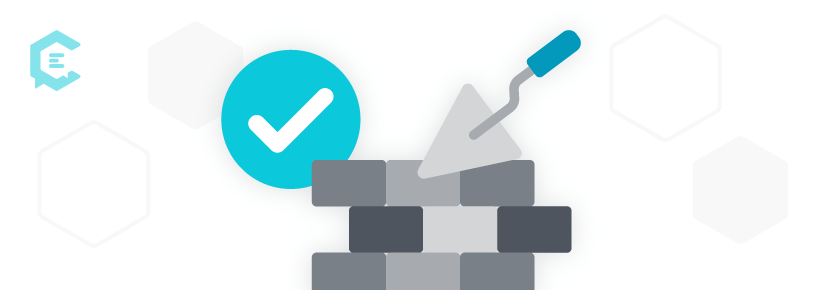
1. Boil it down to foundational facts
Learning how to write tabloid-worthy headlines starts with the basics. Before you try to create something pithy, witty, punny, or just funny, first make sure you’re communicating something essential about your content.
While tabloid headlines, just like catchy digital content headlines, often use humor, puns, or cultural references to grab attention, that’s not their only function or purpose.
The headline makes a promise that the body of the content must deliver on if you want the user to keep reading. If there’s any kind of substantial disconnect there, the user will feel duped or deceived. This is one of the primary reasons users will derogatorily label a piece “clickbait.”
To avoid this, start by simply jotting down words and phrases that convey the most elemental facts of your piece or story, which you can then work into short and creative headlines.
2. Add specific details
Headlines are not the place for vague references and archetypes — not if you want them to zing. Be specific. You’re not simply writing about “headlines” but “tabloid headlines,” or “HR in the fintech industry” instead of just “HR.” The more specific you are, the likelier you are to hit your target.
Look at the elemental words and phrases you jotted down in the first step. How can you add specificity and nuance to those elements?
Play around with those words and phrases so that you can precisely target your headline to the exact kind of readers you want to target. Don’t worry yet about the character length of your headline. You can always tighten it up before publishing.

3. Decide how best to support your piece with the headline
A headline can stake out territory along a number of different spectrums. Should your headline be formal or funny? Should it cite data or should it use poetry? Who exactly are you trying to reach?
Think about the contours and the nature of the content you’re writing. A snarky, funny, or punny headline works great for a piece that’s light-hearted and infused with humor, but it will be jarring and inappropriate paired with a more serious and business-like piece of content. Let the content tell you what kind of headline it needs.
4. Make it negative
It might seem counterintuitive, but negativity sells when learning how to write tabloid-worthy headlines. Consider using your headline to stoke just a little fear or anxiety. Your readers will be more inclined to click and read a piece on “7 Ways to Avoid Getting in Trouble With the IRS” than a piece on “How to File Taxes Properly.”
You can also evoke that need-to-know feeling in your reader by conveying urgency and a built-in deadline or consequences. But don’t think you have to state an actual date or specific consequence to prompt that click.
“What You Must Know Before You File Your Freelance Taxes,” for example, is more compelling than “How to File Your Freelance Taxes.”

5. Create curiosity
Remember when we suggested you make your headlines clearer and more specific? We still think that’s a good idea — but you also need to create a bit of mystery and curiosity with your headline. Nothing draws in a reader and persuades them to keep reading like an unanswered question.
What can you withhold from your fundamental facts to stoke a little curiosity in a person who comes across your headline? For example, “3 Financial Missteps That Will Ruin Your Startup” evokes a little fear, a little negativity (see above), and also some curiosity. What are those three missteps? A startup founder or CFO will absolutely want to find out.
6. Add a bit of wit
Smart puns, clever wordplay, or a dash of humor can transform good headlines into tabloid-worthy headlines. This isn’t easy to learn — some folks seem to have a facility with written humor, whereas others find it a challenge.
Here are a few tips for infusing your headlines with humor or wit:
- Pay attention to letter sounds . Even a little alliteration can create enough interest to prompt a click. Consider “Five Financial Fumbles for Startups to Watch Out For” versus “Five Financial Mistakes Startups Should Avoid.” The additional alliteration with the third “f” sound in “fumbles” gives the headline just a dash more color and fun.
- Use a thesaurus to find similar words that you might be able to build into puns . Be careful with puns, though; they work well with the right kind of content tone, but if your piece is serious or professional in tone, puns can be off-putting.
- Consider a short, well-placed parenthetical . In a headline, it can provide just the right format for a small, funny aside that makes your user do a double-take and click out of curiosity. Consider the difference between “Financial Stumbles Every Startup Should Avoid” and “Financial Stumbles Every Startup Should Avoid (Yes, I’m Speaking from Experience)”— they’re both clear and persuasive. Still, that second one adds a personal bit of schadenfreude and self-deprecation that most readers won’t be able to resist.
- Subvert reader expectations . With headlines, the best way to do this is through a twisted cliche. A headline along the lines of “A bird in the hand is worth a year of your CEO’s salary” or “No use crying over spilled single malt scotch” will take the reader by surprise and encourage them to read the piece that accompanies it.
- Go big . Overstating things a little makes readers roll their eyes. Overstating things to a wild degree makes readers laugh — or at least want to read more to see how you defend your characterization. “How to gain an Instagram audience the size of Switzerland” is funny. No one will take it literally (probably), but it’ll definitely grab their attention.

7. But don’t go overboard
To keep your humor appropriate and avoid offending a large swath of your audience, follow these tips:
- Make your humor self-deprecating, where possible. This might not be as practical with headlines as it would be for the body of the content itself.
- Avoid humor that’s insulting or derogatory toward any person or type of person.
- Keep it simple and minimal. Think about adding a dash of spice to a nearly perfect dish, rather than dumping in too much and ruining it.
- Don’t force the issue. Humor that feels forced or crammed into the headline purely for the sake of making it funny almost never has the desired effect. Err on the side of caution.
8. Review the headline with an eye toward SEO
Humor, wit, a little scarcity, or negativity — these are all helpful ingredients to tabloid-worthy headlines. But on the web, they must all get in line behind readability and SEO . Make sure you’ve included your primary targeted keywords and that it reads like it was written for a human being, not a computer.
If you have to sacrifice the funny bits or the SEO, you’ll want to keep the SEO in most cases. Of course, there are always exceptions. You might have a piece of content that’s so strong that it’ll get shared often enough to overcome any SEO shortcomings. If that’s the case, keep the humor, lose the keywords.

9. Trim your headline down to keep it lean and punchy
With few exceptions, shorter and pithier is better for tabloid-worthy headlines. Keep it tight. Don’t use nine words if you can use five. Don’t use five if four will do just as well.
Of course, you want to avoid trimming it so much that you lose meaning. The classic example is the exhortation to “omit unnecessary words.” You could trim that to “omit words,” but something rather essential gets lost in the edit.
Real tabloid headline examples
Now that you know how to write tabloid-worthy headlines, let’s look at some examples.
Here are some notable historical examples of tabloid headlines:
- “Headless Body in Topless Bar” (New York Post, April 1983)
- “Super Caley Go Ballistic Celtic Are Atrocious” (The Sun, February 8, 2000)
- “OVER £100M! Is this the rail price? Is this just fantasy? Caught up in land buys; No escape from bureaucracy!” (The Armagh Gazette, April 19, 2013)
- “She didn’t see it coming: psychic arrested for $800,000 fraud” (The Guardian, May 12, 2018)
Tabloid headlines excel at three things, in succession:
- First, grabbing a reader’s attention;
- Then persuading them to buy a copy of the tabloid;
- And finally, to read that article.
That’s what makes them the perfect model for writing great content headlines. No matter what your niche or topic, and no matter what kind of content you’re creating, your goal as the writer or content marketer is always to grab the attention of the audience you’re targeting, then persuade them to read your article or blog post.
Remember the headline’s sole purpose
The goal of every headline is to convince the reader to click on the link, to read the article, and to keep reading because the content is actually valuable and of interest.
The value of writing tabloid-worthy headlines is that they help meet that goal. Always keep your eyes on the objective, whether you’re writing a headline, subheads, a deck, or the copy itself: Keep that reader interested so they stay on the page.
Great headlines are compelling, intriguing, and optimized for search engines. If you need help writing tabloid-worthy headlines that get all the clicks — and exceptional content that keeps readers coming back for more, talk to us about our managed content service today.
Our expert team of writers will create high-quality, ready-to-publish content that attracts and retains your target audience, allowing you to focus on other areas of your business.
Stay in the know.
We will keep you up-to-date with all the content marketing news and resources. You will be a content expert in no time. Sign up for our free newsletter.
Elevate Your Content Game
Transform your marketing with a consistent stream of high-quality content for your brand.

You May Also Like...

Personalized Content Strategies: Gaining the Competitive Edge

Integrating Content Across Your Enterprise
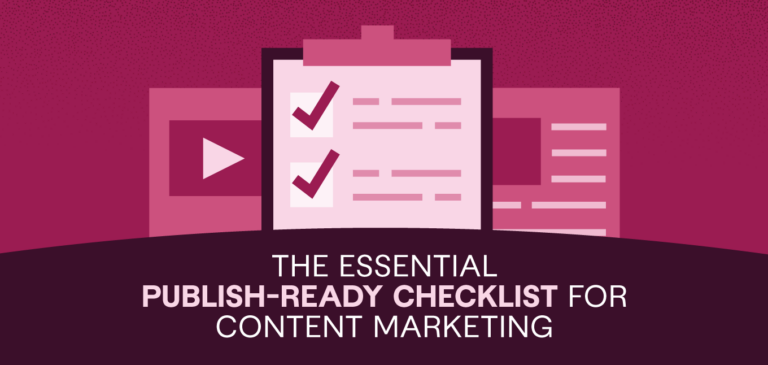
Ensuring Quality: The Essential Publish-Ready Checklist for Content Marketing
- Content Production
- Build Your SEO
- Amplify Your Content
- For Agencies
Why ClearVoice
- Talent Network
- How It Works
- Freelance For Us
- Statement on AI
- Talk to a Specialist
Get Insights In Your Inbox
- Privacy Policy
- Terms of Service
- Intellectual Property Claims
- Data Collection Preferences
404 Not found
IB Language and Literature 2.0
Group 1 english higher and standard level, ‘journalese’: the language of newspaper writing.
“Sensational stories are the junk food of our news diet… You know it’s bad for you but it’s delicious.” Tony Rogers, former journalist and media writer
The headline ‘Man Bites Dog’ is a classic journalistic aphorism that expresses the difference between an everyday event and one that is newsworthy. Frank O’Brien, in his history of the New York Sun (1833 – 1918) , first promulgated the verity said by editor John Bogart that dogs bite men often and we needn’t get excited about it – but that when a man bites a dog – that is news.
Tabloid Journalism is a type of journalism which is often discounted by those who prefer “true journalism.” Tabloid journalism tend to focus on more sensational or extreme topics such as celebrity gossip, outrageous crime, seemingly impossible events (such as the possibility of extra-terrestrials) or other sensational stories. Tabloid papers take the mantra of ‘if it bleeds, it leads’ extremely seriously. Today, tabloid journalism is particularly strong in anglophone cultures such as the UK and the US. These papers are easily recognisable by the vivid red mastheads – in fact, in the UK tabloid papers such as the Sun, the Mirror and the (now discontinued) News of the World are also known as red-tops. Usually placed at shop checkout counters, many give these papers very little credibility. However, there is a huge market for ‘infotainment’ and advertisers have taken advantage of the circulation, making this business highly lucrative – and making the tabloid press more influential than you might like to believe.
You have seen how the selection of stories can be influenced by the institutions of production and newsworthiness criteria. Now it is time to examine how conventional uses of journalistic language affects the presentation of news stories . The most important concepts in this section are emotive language , euphemism and vague language and you will also learn about the distinctions between broadsheet and tabloid journalism. Read the following pieces to clarify what these terms all mean, learn how to both recognise them and to consider their effects:
- The Media and Journalism (IB Textbook)
- Media Sensationalism (article by Glenn Halbrooks)
- To Fix Fake News, Look to Yellow Journalism (Jstor Daily article)
- Is Sensationalism in the News Bad? (Thoughtco article by Tony Rogers)
Reading Challenge
This is a longer and more challenging text, but spending time on this piece, and discussing it with your teacher, will help you master this topic:
- How to Watch TV News (extract by Neil Postman and Steve Powers)
Class Activity: sleaze and sensationalism
In the world of print journalism, the two most widely seen formats for newspapers are broadsheet and tabloid . Broadsheet newspapers appeared in Britain in the 18th century when the government taxed newspapers based on their number of pages. By increasing the size of the pages, newspapers could reduce the number of sheets in each edition – an ingenious way to lessen the amount of tax they had to pay!
One of the first tabloids in the U.S. was The New York Sun , started in 1833. It cost only a penny and was easy to carry – the idea of making a newspaper smaller and more convenient appealed to the working class who had to carry the newspaper to work. Early tabloids were more irreverent in their writing style than their broadsheet brethren, and crime reporting combined with lurid illustrations were a hit with readers. This trend continues today: a broadsheet will refer to a police officer , while a tabloid might use the term cop . And while a broadsheet might use up precious column inches on serious news, a tabloid likes to target sensational stories or celebrity gossip, with a penchant for sleaze, sordid sex, and tales of immorality, perversion and crime.
Learning the differences between broadsheets and tabloids is the basis of this sequence of lessons , which will help you understand how newspaper writers and editors can use language in particular ways to achieve different effects – and even alter the meaning of an identical story or event printed in the news.
Discussion Points
After you’ve got your head around the material in this section, pair up, pick a question, spend five minutes thinking and noting down your thoughts – then discuss your ideas with a friend and report back to the class:
- Tony Rogers writes about sensationalism from an interesting viewpoint: he doesn’t think it’s all bad. What do you think about this idea? What’s good about sensational news reporting?
- Does the news reflect an accurate image of society? If you were an alien who could only study human societies using news broadcasts that had leaked across the cosmos, what conclusions would you draw about life on Earth?
- No journalist likes to be accused of bias as reporting the truth is one of journalisms axiomatic principles – but is truly impartial news reporting possible? Discuss the reasons why total objectivity might be difficult to achieve.
Learner Portfolio
Write a tabloid news article that reports (in a biased and sensational way) on an event from one of your literary texts. Include:
- A headline (bonus points for slammers, alliterating or punning headlines);
- An image that presents your subject in either a favourable or unfavourable light, depending on the angle of your story;
- Embedded interviews and comments from various sources;
- Sensational and dramatic language, employing the techniques you have learned in this section of the course.
Here are a couple of tabloid articles written by students in response to this prompt: one about breaking news in Shakespeare’s The Merchant of Venice and the other responding to gossip from the High Plateau in Broken April .
Paper 1 Text Type Focus: tabloid and broadsheet newspaper reports
At the end of your course you will be asked to analyze unseen texts (1 at Standard Level and 2 at Higher Level) in an examination. You will be given a guiding question that will focus your attention on formal or stylistic elements of the text(s), and help you decode the text(s)’ purpose(s). Below are articles that expose the role of bias in news stories, whether tabloid or broadsheet. Use these practice texts to familiarise yourself with the different features of Newspaper Reports and add them to your Learner Portfolio; you will want to revise text types thoroughly before your Paper 1 exam. You can find more information – including text type features and sample Paper 1 analysis – by visiting 20/20 . Read through one or two of the exemplars, then choose a new paper and have a go at writing your own Paper 1 analysis response:
- UK Weather: Snow and Ice
- 100 Meter Sprint (Past Paper)
- Gat-Crash (Past Paper)
- Disappearing Town (Past Paper)
key features of news reports
- Headline: the choice of words in a headline is essential to the tone and angle of the story. There are many techniques involved in creating headlines and you should definitely learn: slammer; pun; alliteration; elliptical headlines (which only include the keywords).
- Visuals: all newspapers make use of photographs to accompany stories. Tabloid papers are dominated by images while broadsheet papers tend to use smaller photographs. Look out for pictures of people’s faces, which reveal emotion and create bias .
- Copy: the main text of the article. Features you should be on the look out for are: sensationalism; vague language; emotive language and euphemism .
- Embedded interviews: you can expect to find witness recounts, expert opinions and statements from authority figures in almost all newspaper reports.
- Bias: all kinds of bias exist in newspaper reports, from selection bias (the choice of what content to include and what to exclude) to name-calling , to the use of certain facts and statistics and more.
- Figurative Language: news reports are a rich source of metaphor, simile, hyperbole, and exaggeration, often distorting reality in some way.
Body of Work: The ‘Difficult Duchess’
In 2016, Prince Harry, a member of the British Royal family, was introduced to Meghan Markle, an American actress, and a modern day romantic fairy tale began. Months after that initial London meeting, the country’s press – including the infamous tabloid redtops – managed to get news of their blossoming romance. The Sunday Express was the first paper to reveal the 36-year-old was Prince Harry’s new girlfriend with the news featuring on the front page.
In September, the couple made their first public appearance at the Invictus Games, an international sporting event set up by Harry for injured soldiers. Crowds gathered to catch a glimpse of the couple strolling hand-in-hand and the global press rushed to capture the moment. In the weeks and months after the story broke, the Royal Romance gripped the nation – and readers in other countries too, who could follow the news story online. Press intrusion began to become more and more significant. Meghan was followed shopping in London and stories began to break about her family relationships, mixed race heritage, pictures posted online, and her previous marriage to Trevor Engleson which ended in divorce in 2013.
In November 2016, the prince officially confirmed he was dating the US actress. In a statement from Kensington Palace, he also took the opportunity to condemn Meghan’s treatment by the press . He referred to a “smear” on the front page of a national newspaper, racial undertones in comment pieces and “outright sexism and racism” from online trolls. Eventually, the two quit the UK and moved to America, where they gave a forthright interview with Opera Winfrey. Many have continued to speculate that the media’s general bias against her comes from resistance to accepting a mixed-race American into what upper-class white British people feel is an exclusive cultural institution like the British royals.
Here you can find a selection of news stories about Meghan Markle and her relationship with Prince Harry to study as a Body of Work. Because a non-literary Body of Work must consist of texts by the same author, all the stories have come from The Sun newspaper, a notorious British tabloid redtop. You can study these articles to discover the way supposedly factual news reporting can be biased towards or against an individual. You might like to trace how the stories became more and more negative over time, keep track of the various names and labels used to describe Meagan, analyse the headlines, notice the institutional voices who are recruited to lead your opinion about Meagan and compare the way the press treats her to the way it treats, for example, Harry in the same stories. Should you wish to find more evidence, you can find over 300 pages (!) of articles, photographs and videos by directly visiting the Sun Online and searching for ‘Meghan Markle ‘.
Towards Assessment: Individual Oral
Supported by an extract from one non-literary text and one from a literary work, students will offer a prepared response of 10 minutes, followed by 5 minutes of questions by the teacher, to the following prompt: Examine the ways in which the global issue of your choice is presented through the content and form of two of the texts that you have studied. (40 marks)
An extract from this Body of Work would make an ideal text to discuss in your Individual Oral activity. Here are suggestions as to how you might use this Body of Work to create a Global Issue. You can use one of these ideas, or develop your own. You should always be mindful of your own ideas and class discussions and follow the direction of your own thoughts, discussions and programme of study when devising your assessment tasks:
- Field of Inquiry: Power, Politics and Justice
- Global Issue: The creation of bias in texts
The way texts are written and constructed in order to lead your opinion about a person or event would make an interesting subject for your Individual Oral talk. Many literary works are guided by the author’s intention, and you can examine the balanced or bias presentation of people or events in literature as well as non-literary Body of Works.
- Field of Inquiry: Culture, Community and Identity
- Global Issue: A woman’s place
As you read the ‘Difficult Duchess’ collection of news articles, a suspicion starts to grow that there may be an agenda against Meghan Markle. The reports can be quite vicious; from even the first couple of articles you can find snide comments about the way she behaves, her past, and whether she has ulterior motives. You could legitimately ask whether she has been given a fair chance – and whether the writers feel that she needs to be put back in her place.
possible liteary pairings
- George Bernard Shaw’s Pygmalion – this could be a natural pairing for the ‘Difficult Duchess’ body of work, as Liza is a prototypical Meghan, being asked to fit into an exclusive cultural upper-class family, and being constantly upbraided for her appearance, speech, habits and viewpoints. Until, that is, she finds it in her to fight back.
- Shakespeare’s The Merchant of Venice – another ideal companion text for this activity might be this play. Long thought of as a ‘problem play’ because of its bias and stereotypical presentation of Jewish people, you might like to present your ideas as to whether the depiction of Shylock leads your opinion in the same way the Sun does with Meghan Markle.
- Carol Ann Duffy’s The World’s Wife – this feels like an ideal pairing. Duffy’s intention is to give voices to silenced or marginalised women and – while it would be hard to argue Meghan Markle has been marginalised – although plenty of people are invited to speak about her in this Body of Work, one voice is conspicuously missing: her own.
- Ismail Kadare’s Broken April – like Meghan, Diana is defined by others who see her in a certain way. Whether it’s Mark Ukacierra, who despises her on sight, the local people on the rrafsh who are unused to seeing a woman so free, or even Bessian, her own husband, who doesn’t seem able to recognise Diana’s true thoughts and feelings.
- Angela Carter’s The Bloody Chamber – in the same way that the media try to define Meghan Markle’s identity to suit their own agenda, so too does the Marquis attempt to remake his young wife in his own image.
- Han Kang’s The Vegetarian – when Yeong-hye decides to give up eating meat, she very quickly realises that to go against Korean social convention makes her an enemy to her family, husband and friends. Is it her diet that offends them – or the fact that she is trying to assert her autonomy in a patriarchal society? Importantly, her story is recounted through the perspectives of others, and only rarely do we hear her own voice.
- Shen Congwen’s Border Town – as Cuicui grows older, her grandfather decides it’s time for her to be married. But how much say does she have in her own future? This could be an interesting choice of literary work to combine with the ‘Difficult Duchess’ news reports.
- Balzac and the Little Chinese Seamstress by Dai Sijie – investigating Luo’s attitude towards his new girlfriend reveals some surprising insights. He never really seems to be satisfied by her, can be a bit condescending, and even resents her taking matters into her own hands at the end of the novel.
Wider Reading and Research
- Tabloid Journalism – go to this ‘howstuffworks’ article to find out all about tabloid journalism.
- Journalism 101: how to write a lead – in this informative video lecture, Journalism Professor Mark Grabowski explains how news writers write good leads for newspaper stories.
- The Writer’s Art – in this extract from News Reporting and Writing by Melvin Mencher, you’ll find out the skills most essential for writing the news.
- The Language of News Media (extract from Media and Language by Allan Bell)
- The Fourth Estate – documentary series released in 2018 about The New York Times in the Trump era that explores critical issues facing the ‘newspaper of record’ and journalism today. Embedded here is the first of four episodes: First 100 Days.
- Jon Talks About the Media – podcast episode, Washington Post media columnist Margaret Sullivan talks with Jon Stewart about media sensationalism.
Share this:
Categories: Readers, Writers, Texts
Leave a comment Cancel reply

- Already have a WordPress.com account? Log in now.
- Subscribe Subscribed
- Copy shortlink
- Report this content
- View post in Reader
- Manage subscriptions
- Collapse this bar
Advertisement
How Tabloids Work
- Share Content on Facebook
- Share Content on LinkedIn
- Share Content on Flipboard
- Share Content on Reddit
- Share Content via Email
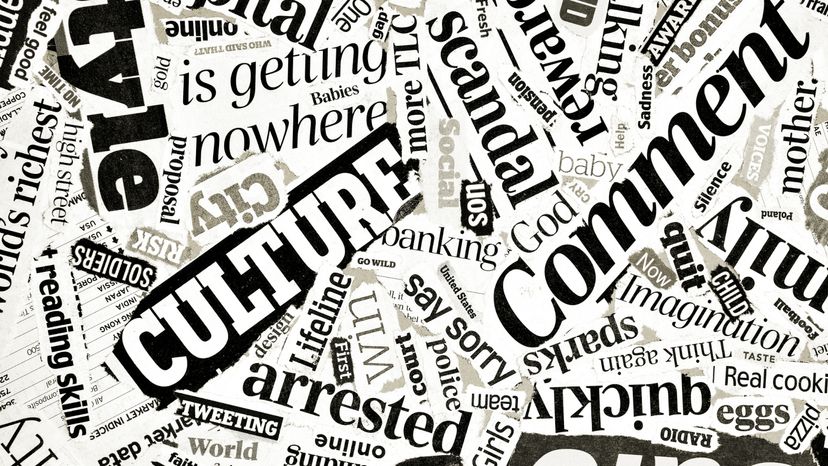
Even if you've never read a tabloid, the headlines probably grab your attention at the supermarket checkout. From celebrity scandals to the truly bizarre, tabloid newspapers seem to cover stories that are outside the realm of serious journalism. Sometimes it seems like the stories are completely made up. And where do they get photographs of two-headed babies and space aliens, anyway?
In a highly regarded newspaper like the New York Times or Washington Post, the facts in a news story are meticulously checked and confirmed with multiple sources (when everything goes as it should). Editors and writers conform to journalistic standards and work hard to maintain an overall sense of objectivity. Tabloids don't seem to follow any of these rules. So where do they get their stories from?
Sometimes tabloids do make up their stories out of thin air. The notorious sex and gore tabloids of the 1950s and 60s were almost completely fictional, with just enough truth to make the stories seem believable. Even today, some tabloids include "top-of-the-head" stories invented by writers. If a story is about an incredible event that happened in some remote part of the world, or the people quoted in the story are vaguely identified, then it is probably false. This is a last resort for tabloid writers and editors, however -- they usually try to base their stories on a grain of truth.
In this article, we'll find out where tabloids get their stories, how they evolved and what effect the popularity of tabloids has had on newspapers and television shows.
The most important recent development in tabloid history is the 1999 purchase of every major supermarket tabloid in the U.S. by American Media, Inc. The National Enquirer, Star, Globe, National Examiner, Weekly World News and others are all owned by this media conglomerate.
The Tabloid Story
Tabloids and the law, tabloid origins, tabloids today.
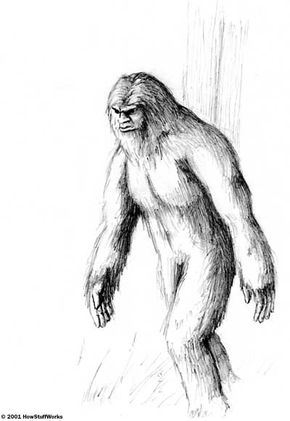
The key to tabloid story writing is that something doesn't have to be true to print -- someone just has to have said that it was true. Writers can bring in sources and experts to confirm just about anything. They will use leading questions to get a "money quote" from a source, or offer up the quote themselves and use it as long as the source agrees with them. For example, a writer might interview a witness for a story about Bigfoot and ask, "Did the raging beast howl with fury, and did it sound like a demon from hell itself?" If the witness says yes, the story might quote the witness as saying, "Then the raging beast howled with fury. It sounded like a demon from hell itself!"
Writers may also quote "experts" for a story, even if that expert has no credentials or subscribes to fringe beliefs. The president of a local Bigfoot Society might be brought into the story like this: "Jim Smith, Bigfoot expert and noted wilderness guide, estimated that there may be as many as 500 of the unclassified creatures living in the forests of Oregon. He has seen several of them himself."
Good tabloid writers expand upon small news items that appear in the back pages of traditional newspapers. In fact, one of the notable differences between a tabloid newsroom and one at a serious newspaper is that tabloid writers don't do much work outside the office. Once a writer finds a story that can be expanded, he calls family members or authorities involved with the story to get quotes. Using those quotes, the writer can flesh out the story and make it more about the people involved than the events themselves. This is a hallmark of the tabloid writing style.
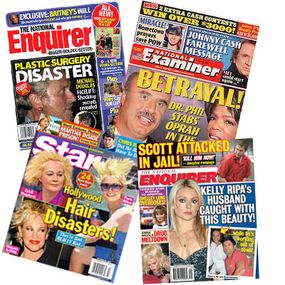
Celebrity news is a staple of the tabloids, and sources for this information are everywhere. Each tabloid writer maintains an army of sources, including security guards, hair stylists, personal drivers and even police officers who will call the writer whenever they have new information on a celebrity. These informants are paid various amounts for their information, depending on the quality of the news and which celebrity it involves. Information about a minor TV actor might be worth a few hundred dollars, while a major scoop about Madonna or Britney Spears could be worth thousands.
A large proportion of tabloid celebrity news comes from celebrities themselves, often by way of their publicists. Some stars build a working relationship with a tabloid, offering inside stories in exchange for the free publicity. At other times, the tabloid will accept inside stories while agreeing to avoid running harsh or negative stories about a certain star. The studios even leak information about upcoming movies or the scripts for the new season of a TV show to get publicity for the show.
Next, we'll see how tabloids get away with some of their more questionable content.
People crave photographs of celebrities. Tabloids are willing to pay photographers very well for these photos, and this demand has created an entire sub-class of celebrity journalists. The paparazzi are not just photographers who shoot celebrities -- they stalk celebrities and try to get unflattering shots of them. Their behavior often crosses the line of what people think is appropriate, and they have been guilty of invading the privacy of celebrities as well as endangering them. The death of Princess Diana has been partially blamed on aggressive paparazzi.
The word paparazzi comes from a news photographer named Paparazzo in the movie "La Dolce Vita." In Italian, the plural of "paparazzo" is "paparazzi." This name was soon applied to Italian photographers who hounded celebrities, and quickly became an international term for this type of photographer.

The tabloids are not immune to lawsuits, but they aren't sued nearly as often as you might think. What's their secret?
In the no-holds-barred days of the 1950s and 60s, some tabloids realized that they could write pretty much anything about anyone with little fear of legal retribution. In his book "I Watched a Wild Hog Eat My Baby," former National Enquirer editor Bill Sloan wrote that the publishers realized "there are two overwhelming reasons why no celebrity of any stature would stoop to suing a gutter-level publication like the Informer even in clear-cut cases of libel. For one thing, the publicity surrounding this type of suit could prove a thousand times more damaging than the original fabrication. For another, the publisher probably didn't have any money to pay damages anyway."
In the 1980s and 90s, supermarket tabloid circulation reached the tens of millions, and the companies that owned them had billions of dollars in assets. Those two factors obviously no longer applied, and actress Carol Burnett struck the first blow when she sued the National Enquirer in 1981 for printing a story accusing her of public drunkenness. She was initially awarded $1.6 million, but the amount was later reduced on appeal and settled out of court. Singer Aretha Franklin filed a similar suit against Star in 2001. She asked for $50 million after the publication of a story that claimed she had a serious drinking problem that was affecting her performances. Arnold Schwarzenegger, Tom Cruise and Nicole Kidman have all successfully sued tabloids as well.
The topic of libel in newspapers is a complicated one -- complicated enough that most major tabloids keep lawyers on retainer to read through each article before it is published. Although some of the stories may seem libelous, tabloid writers and lawyers usually know just how far they can go before they cross the line into libelous territory.
When it comes to the truly outrageous stories in tabloids like the Weekly World News, there is little fear of legal retribution. Stories about UFOs or bizarre cults can neither be proven nor disproven. Even if someone could prove that a story was fake, there isn't really any law against making up fake news stories, as long as real people mentioned in the story haven't been libeled.
In the next section, we'll learn how tabloids began.
Libel and slander are types of defamation -- "the issuance of a false statement about another person, which causes that person to suffer harm" [ref]. The statement is libelous if it is written or printed. If the statement is spoken, it is slander.

The term tabloid originally referred to the size and format of a newspaper. Some publishers started printing a smaller version of the traditional newspaper (or broadsheet) that was easier to read on subway trains -- a tabloid. Since then, the tabloid has come to be known more for its content than its size. The word is so associated with newspapers covering celebrity gossip and scandal that many serious tabloid-sized papers refer to themselves as "compact" instead.
The roots of modern tabloids can be traced directly to the U.S. penny press of the mid-1800s. Prior to the advent of the penny press, most newspapers cost about six cents -- nearly half a day's pay for the working class at the time. These mainstream newspapers catered to businessmen and politicians. In the 1830s, newspapers like the Sun and the Herald in New York began to focus more on human-interest stories and less on politics and business. The style of writing was also different. The penny press didn't lay out the facts of a story with dry detachment. Their stories were written to appeal to the senses and emotions of readers with vivid descriptions, simple sentences and shorter paragraphs.
Soon the popularity of sensational stories began to overshadow any need for relaying actual facts. This was the era of yellow journalism . One of the most infamous yellow journalism publishers was William Randolph Hearst, whose New York Journal (later called the New York Journal-American) published wild exaggerations and false stories to increase circulation. The New York Journal-American and other tabloids prospered for several decades with a mix of celebrity scandal and gory murder stories, but didn't survive the Great Depression. In 1952, a former Hearst-owned paper called the New York Enquirer was purchased by Generoso Pope Jr. for $75,000. Pope immediately changed the paper to tabloid size and took it in a new direction, with content based on people's tendency to stop and gawk at car accidents. "If it was blood that interested people, I'd give it to them," he said in a 1970s Time interview (Sloan, pg. 37). Circulation increased rapidly based on a steady stream of gory crime scene photographs and murder stories.
Rupert Murdoch began selling millions of copies of his News of the World in England by adding celebrity photographs and sex scandals to the typical tabloid fare. Pope's paper followed suit and expanded beyond New York City. It became the National Enquirer.
In the 1960s, the old newsstands where the tabloids had been sold for decades were fading. Once again, Gene Pope was at the head of the trend. The best national market for his newspaper was the large supermarket chains, but gross-out photos weren't likely to get any shelf space there. Pope cleaned up the Enquirer, focusing on celebrities, the paranormal, and self-help articles. Once again, his formula was a success, and other tabloids changed their format as well.
In the next section, we'll learn about today's tabloids.
One of the most popular sections in Joseph Pulitzer's New York World was its color comic strip "Hogan's Alley." This strip, drawn by Richard F. Outcault, featured a character called "The Yellow Kid." William Randolph Hearst copied many of Pulitzer's tactics for his paper, the New York Journal, and this strip was no exception. He hired Outcault away from Pulitzer and soon had his own Yellow Kid. Pulitzer hired artist George Luks to carry on "Hogan's Alley." This "yellow kids" competition exemplified the newspapers' sensational and competitive style, which came to be called "yellow journalism."
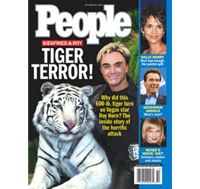
When Gene Pope bought the New York Enquirer in 1952, it had a circulation of less than 17,000 (Sloan, pg. 28). In the tabloid heyday of the late 1970s and 1980s, the National Enquirer's circulation topped 5 million (Sloan, pg. 218). Overall tabloid circulation has dropped by as much as 60 percent in the intervening years, with the Globe's circulation dropping below 1 million and Weekly World News only selling about 300,000 copies per week. Today, the National Enquirer reports a circulation of just 2.7 million, while American Media reports total circulation for the Enquirer, Star, Globe, National Examiner and Sun at 5.4 million [ ref ]. This steady decline shows no signs of stopping.
The decline might actually be the result of the tabloids' success. The skyrocketing sales of tabloids and their focus on entertainment rather than hard news caused the mainstream media to adopt some tabloid tactics to increase readership and viewership. When the media furor over the Monica Lewinsky scandal was at its peak, readership of tabloids actually dropped. The mainstream news outlets were giving their readers all the scandalous information they could possibly want. Today, magazines like People and Us have taken a mellowed-out tabloid formula, made it glossy and turned it into something people don't feel embarrassed to read in the waiting room at the dentist's office. Tabloid success even created an entire genre of TV show -- tabloid TV. Shows like Hard Copy and Entertainment Tonight offer viewers the same kind of stories and celebrity gossip the tabloids provide, but at a quicker pace and in a more visually appealing form.
For more information on tabloids and related topics, check out the links on the next page.
When the Monica Lewinsky scandal and the O.J. Simpson trial became big news, many people learned that the tabloids had something going for them: a legion of thorough, dedicated reporters who were highly skilled at digging out key pieces of the story. Tabloid coverage of these events, particularly the National Enquirer's coverage of O.J. Simpson, has led to a greater degree of respect for tabloid reporters. The Enquirer broke stories about Simpson's shoes, a dealer that sold him a knife similar to the murder weapon and other important aspects of the case before mainstream newspapers reported the same stories. The increase in respect has not translated into an increase in sales, however.
Lots More Information
Related howstuffworks articles.
- How Newspapers Work
- How Composting Works
- How Fear Works
- How Bigfoot Works
- How UFOs Work
- How Urban Legends Work
More Great Links
- Columbia Journalism Review: Who Owns What
- Tabloids, Talk Radio, and the Future of News
- National Enquirer
- Weekly World News
- Bird, S. Elizabeth. For Enquiring Minds: A Cultural Study of Supermarket Tabloids. University of Tennessee Press, 1992. 0-87049-728-6.
- Calder, Iain. The Untold Story. Miramax Books, 2004. 0-7868-6941-0.
- Miraldi, Robert. The Pen Is Mightier. Palgrave Macmillan, 2003. 0-312-29292-9.
- Sloan, Bill. I Watched a Wild Hog Eat My Baby. Prometheus Books, 2001. 1-57392-902-6.
- Smith, Anthony. The Newspaper: An International History. Thames and Hudson, 1979.
Please copy/paste the following text to properly cite this HowStuffWorks.com article:
404 Not found
- About Brian Wasko
- About WriteAtHome®
- Resource Library
- Our Quizzes
- Writing Tips
Writing Prompt: Tabloid Reporting
Posted on: 02-22-2012 by: Brian Wasko
This post includes a fun, creative approach to an expository/journalism paper. This is a popular assignment in WriteAtHome ‘s introductory high school course, Composition 1.
Most of us have read at least the covers of the newspaper tabloids that typically appear near the checkout counters of grocery stores. You know the ones we mean — they look like newspapers, but carry fantastic and nutty stories about space aliens and imaginative scientific discoveries. Maybe you’ve chuckled at the ridiculous headlines that often appear: “Mother Gives Birth to Gorilla Baby!” “Elvis Makes Regular Visits to Orlando Retirement Community!”
Your assignment this week is to write a “news story”. You are obviously free to make up any “facts.” Make it as ridiculous as you’d like, but make every attempt to write clearly and informatively.
Tip One : This is not a journalism class, but an important feature of most news articles (even make-believe stories) is to include the most important facts in summary form in the first paragraph. The idea is to give the essentials early in the article so that readers who are merely skimming can get the basic facts in a paragraph or two. From there, the information generally becomes less important. Try to imitate this style as you write.
Tip Two : Even though we refer to this as a news “story,” this assignment is not to write a narrative. This is a news article, which means the primary purpose is to provide information, not to entertain with an interesting tale. Start with the most important facts, not necessarily the first thing that happened. One difference between a news article and a short story is that a story is organized chronologically (by time), and an article by order of importance. If you’re not sure what we mean, pick up any newspaper (not necessarily a tabloid), and read several front page items. Notice that they do more explaining than story-telling.
You may choose from one of the following, or come up with a tabloid story on your own :
- Aliens Abduct High School Student!
- High School Student Devoured by Giant Hamster!
- High School Student Writes Great American Novel…On 3 X 5 Note Card!
- High School Student Performs Successful Brain Transplant on Sister! (or brother)
- High School Student Trains Poodle to Take Algebra Exam!
- High School Student Saves the Planet from Collision with Meteor!
- Amazing High School Student Keeps Room Neat for Six Months!
Improve your writing with a 100% guaranteed writing course from WriteAtHome.com. Created with homeschooling teens in mind. Visit us right now!
Categories: Writing Assignments/Prompts Tags: assignment , creative writing , exposition , expository writing , tabloid , tabloid article , tabloid journalism , writing assignment , writing prompt
Share this Post
About the author.
Brian Wasko Brian is the founder and president of WriteAtHome.com. One of his passions is to teach young people how to write better. View all posts by Brian Wasko
- Popular Posts
- Related Posts
250 Ways to Say “Went”
200 Ways to Say “Went”
Myth Buster: How Many Sentences Must a Paragraph Have?
When a Preposition Is an Adverb
Narrative Writing Prompt: An Unforgettable Dream
Descriptive Writing Prompt: An Unexpected Guest
Descriptive Writing Prompt: A Close Observation
Narrative Writing Assignment: A Rescue Story
Leave a Reply Click here to cancel reply.
Currently you have JavaScript disabled. In order to post comments, please make sure JavaScript and Cookies are enabled, and reload the page. Click here for instructions on how to enable JavaScript in your browser.
Recent Posts
Back Yard, Backyard, or Back-Yard?
How to Quit Being a Grammar Snob: Eight Vital Steps
Identity Grammar
- November 2016
- December 2015
- October 2015
- September 2015
- August 2015
- February 2015
- January 2015
- December 2014
- November 2014
- October 2014
- September 2014
- August 2014
- February 2014
- January 2014
- December 2013
- November 2013
- October 2013
- September 2013
- August 2013
- February 2013
- January 2013
- December 2012
- November 2012
- October 2012
- September 2012
- August 2012
- February 2012
- January 2012
- December 2011
- November 2011
- October 2011
- September 2011
- August 2011
- February 2011
If you like a post, please take a second to click "like," and comment as often as you like. We promise not to correct your grammar!
WriteAtHome®, Inc.
- Terms of Use
How to Write an Article: A Proven Step-by-Step Guide
Are you dreaming of becoming a notable writer or looking to enhance your content writing skills? Whatever your reasons for stepping into the writing world, crafting compelling articles can open numerous opportunities. Writing, when viewed as a skill rather than an innate talent, is something anyone can master with persistence, practice, and the proper guidance.
That’s precisely why I’ve created this comprehensive guide on ‘how to write an article.’ Whether you’re pursuing writing as a hobby or eyeing it as a potential career path, understanding the basics will lead you to higher levels of expertise. This step-by-step guide has been painstakingly designed based on my content creation experience. Let’s embark on this captivating journey toward becoming an accomplished article writer!
What is an Article?
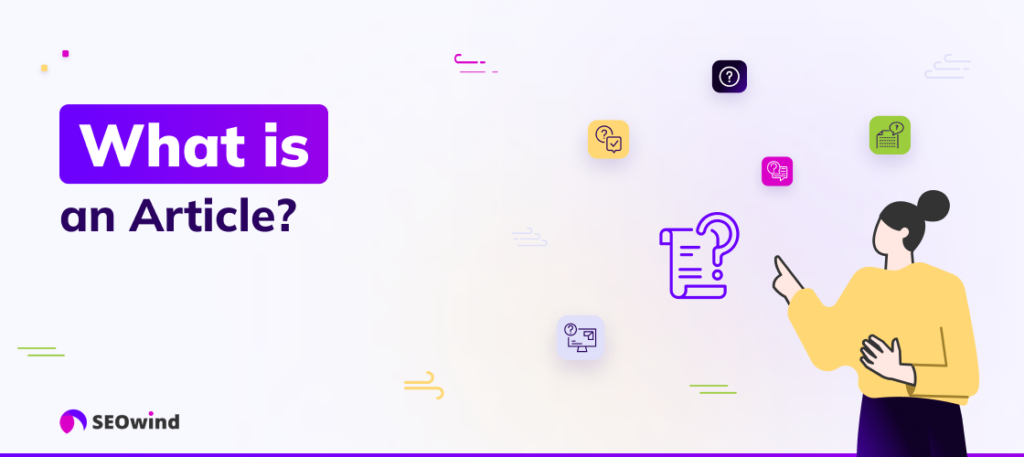
An article is more than words stitched together cohesively; it’s a carefully crafted medium expressing thoughts, presenting facts, sharing knowledge, or narrating stories. Essentially encapsulating any topic under the sun (or beyond!), an article is a versatile format meant to inform, entertain, or persuade readers.
Articles are ubiquitous; they grace your morning newspaper (or digital equivalents), illuminate blogs across various platforms, inhabit scholarly journals, and embellish magazines. Irrespective of their varying lengths and formats, which range from news reports and features to opinion pieces and how-to guides, all articles share some common objectives. Learning how to write this type of content involves mastering the ability to meet these underlying goals effectively.
Objectives of Article Writing
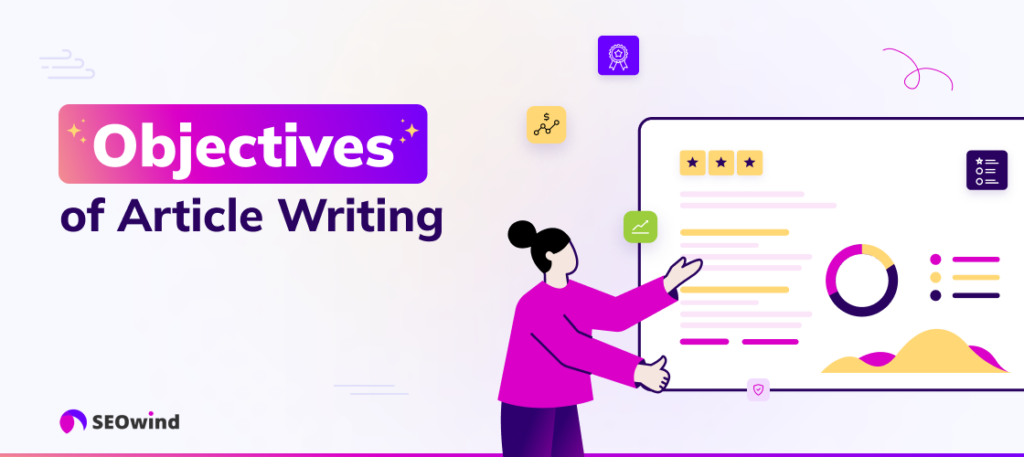
The primary goal behind learning how to write an article is not merely putting words on paper. Instead, you’re trying to communicate ideas effectively. Each piece of writing carries unique objectives intricately tailored according to the creator’s intent and the target audience’s interests. Generally speaking, when you immerse yourself in writing an article, you should aim to achieve several fundamental goals.
First, deliver value to your readers. An engaging and informative article provides insightful information or tackles a problem your audience faces. You’re not merely filling up pages; you must offer solutions, present new perspectives, or provide educational material.
Next comes advancing knowledge within a specific field or subject matter. Especially relevant for academic or industry-focused writings, articles are often used to spread original research findings and innovative concepts that strengthen our collective understanding and drive progress.
Another vital objective for those mastering how to write an article is persuasion. This can come in various forms: convincing people about a particular viewpoint or motivating them to make a specific choice. Articles don’t always have to be neutral; they can be powerful tools for shifting public opinion.
Finally, let’s not forget entertainment – because who said only fictional work can entertain? Articles can stir our emotions or pique our interest with captivating storytelling techniques. It bridges the gap between reader and writer using shared experiences or universal truths.
Remember that high-quality content remains common across all boundaries despite these distinct objectives. No matter what type of writer you aspire to become—informative, persuasive, educational, or entertaining—strive for clarity, accuracy, and stimulation in every sentence you craft.
What is the Format of an Article?
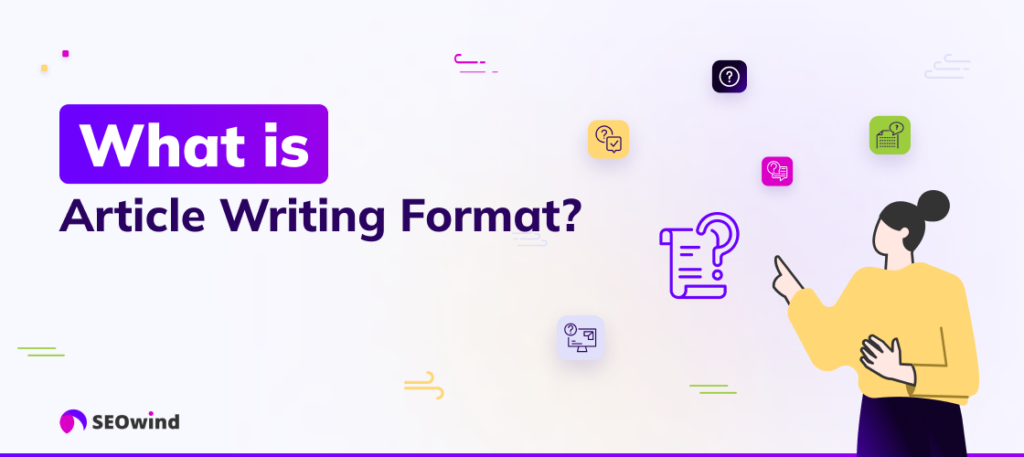
When considering how to write an article, understanding its foundation – in this case, the format – should be at the top of your list. A proper structure is like a blueprint, providing a direction for your creative construction.
First and foremost, let’s clarify one essential point: articles aren’t just homogenous chunks of text. A well-crafted article embodies different elements that merge to form an engaging, informative body of work. Here are those elements in order:
- The Intriguing Title
At the top sits the title or heading; it’s your first chance to engage with a reader. This element requires serious consideration since it can determine whether someone will continue reading your material.
- Engaging Introduction
Next comes the introduction, where you set expectations and hint at what’s to come. An artfully written introduction generates intrigue and gives readers a compelling reason to stick around.
- Informative Body
The main body entails a detailed exploration of your topic, often broken down into subtopics or points for more manageable consumption and better flow of information.
- Impactful Conclusion
Lastly, you have the conclusion, where you tie everything neatly together by revisiting key points and offering final thoughts.
While these components might appear straightforward on paper, mastering them requires practice, experimentation with writing styles, and a good understanding of your target audience.
By putting in the work to familiarize yourself with how to create articles and how they’re structured, you’ll soon discover new ways to develop engaging content each time you put pen to paper (or fingers to keyboard!). Translating complex concepts into digestible content doesn’t need to feel daunting anymore! Now that we’ve tackled the format, our focus can shift to what should be included in an article.
What Should Be in an Article?
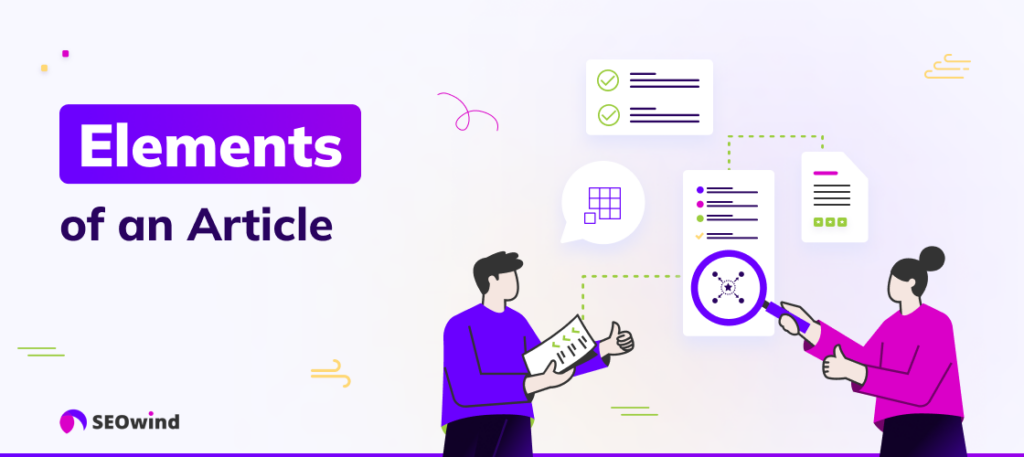
Understanding that specific items should be featured in your writing is crucial. A well-crafted article resembles a neatly packed suitcase – everything has its place and purpose.
Key Information
First and foremost, you need essential information. Start by presenting the topic plainly so readers can grasp its relevance immediately. This sets the tone of why you are writing the article. The degree of depth at this point will depend on your audience; be mindful not to overwhelm beginners with too much jargon or over-simplify things for experts.
Introduction
Secondly, every article must have an engaging introduction—this acts as the hook that reels your audience. Think of it as a movie trailer—it offers a taste of what’s to come without giving away all the details.
Third is the body, wherein you get into the crux of your argument or discussion. This is the point at which you present your ideas sequentially, along with supporting evidence or examples. Depending on the nature of your topic and personal style, this may vary from storytelling forms to more analytical breakdowns.
Lastly, you’ll need a fitting conclusion that wraps up all previously discussed points, effectively tying together every loose thread at the end. This helps cement your main ideas within the reader’s mind even after they’ve finished reading.
To summarize:
- Critical Information: Provides context for understanding
- Introduction: Sheds further light on what will follow while piquing interest
- Body: Discusses topic intricacies using narratives or case studies
- Conclusion: Ties up loose ends and reemphasizes important takeaways
In my experience writing articles for beginners and experts alike, I found these elements indispensable when conveying complex topics articulately and professionally. Always keep them at hand when looking to produce written material.
How should you structure an article?

Crafting a well-structured article is akin to assembling a puzzle – every piece has its place and purpose. Let’s look at how to create the perfect skeleton for your content.
The introduction is your article’s welcome mat. It should be inviting and informative, briefly outlining what a reader can expect from your writing. Additionally, it must instantly grab the readers’ attention so they feel compelled to continue reading. To master the art of creating effective introductions, remember these key points:
- Keep it short and precise.
- Use compelling hooks like quotes or intriguing facts.
- State clearly what the article will cover without revealing everything upfront.
Moving on, you encounter the body of your piece. This segment expands on the ideas outlined in the introduction while presenting fresh subtopics related to your core story. If we compare article writing to crossing a bridge, each paragraph represents a step toward the other side (the conclusion). Here are some tips for maintaining orderliness within your body:
- Stick closely to one idea per paragraph as it enhances readability.
- Ensure paragraphs flow logically by utilizing transitional words or sentences.
- Offer evidence or examples supporting your claims and reinforce credibility.
As you approach the far side of our imaginary bridge, we reach an equally essential section of the article known as the conclusion. At this point, you should be looking to wrap your message up neatly while delivering on what was initially promised during the introduction. This section summarizes the main points, providing closure and ensuring readers feel satisfied.
Remember this golden rule when writing the conclusion: follow the “Describe what you’re going to tell them (Introduction), tell them (Body), and then summarize what you told them (Conclusion).” It’s a proven formula for delivering informative, engaging, and well-structured articles.
One final tip before moving on: maintaining an active voice significantly enhances clarity for your readers. It makes them feel like they’re participating actively in the story unfolding within your article. In addition, it helps ensure easy readability, which is vital for keeping your audience engaged.

Tips for Writing a Good Article
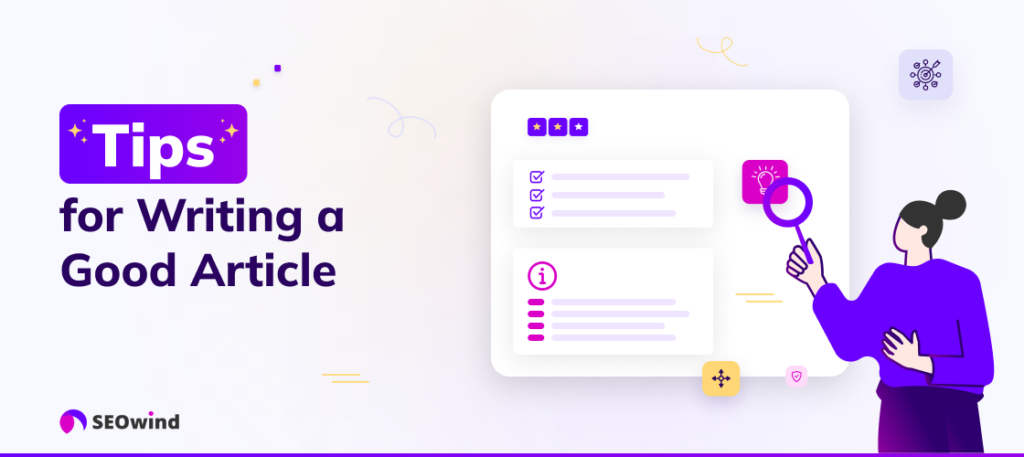
A persuasive, engaging, and insightful article requires careful thought and planning. Half the battle won is by knowing how to start writing and make content captivating. Below are vital tips that can enhance your article writing skills.
Heading or Title
An audience’s first impression hinges on the quality of your title. A good heading should be clear, attention-grabbing, and give an accurate snapshot of what’s contained in the piece’s body. Here are a few guidelines on how to create an impactful title:
- Make it Compelling: Your title needs to spark interest and motivate readers to delve further into your work.
- Keep it concise: You want to have a manageable heading. Aim for brevity yet inclusiveness.
- Optimize with keywords: To boost search engine visibility, sprinkle relevant keywords naturally throughout your title.
By applying these techniques, you can increase reader engagement right from the get-go.
Body of the Article
After winning over potential readers with your catchy title, it’s time to provide substantial content in the form of the body text. Here’s how articles are typically structured:
Introduction: Begin by providing an appealing overview that hooks your audience and baits them to read more. You can ask poignant questions or share interesting facts about your topic here.
Main Content: Build on the groundwork set by your introduction. Lay out detailed information in a logical sequence with clear articulation.
Conclusion: This reemphasizes the critical points discussed in the body while delivering a lasting impression of why those points matter.
Remember that clarity is critical when drafting each part because our objective here is to share information and communicate effectively. Properly understanding this approach ensures that the writing experience becomes creative and productive.
Step By Step Guide for Article Writing
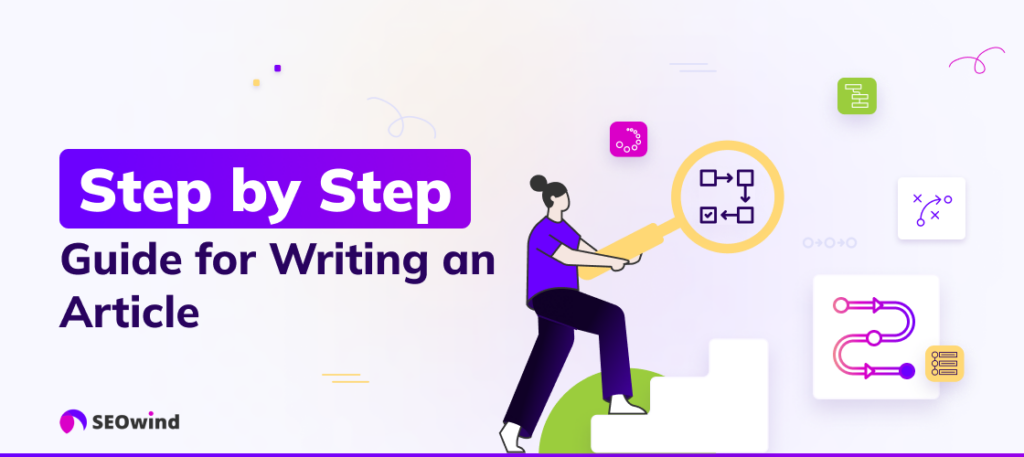
How do you write an article that engages your readers from the first line until the last? That’s what most writers, whether beginners or seasoned pros are trying to achieve. I’ll describe a step-by-step process for crafting such gripping articles in this guide.
Step 1: Find Your Target Audience
First and foremost, identify your target readers. Speaking directly to a specific group improves engagement and helps you craft messages that resonate deeply. To pinpoint your audience:
- Take note of demographic attributes like age, gender, and profession.
- Consider their preferences and needs.
- Look into how much knowledge they are likely to possess concerning your topic.
Knowing this will help you decide what tone, language, and style best suits your readers. Remember, by understanding your audience better, you make it much easier to provide them with engaging content.
Step 2: Select a Topic and an Attractive Heading
Having understood your audience, select a relevant topic based on their interests and questions. Be sure it’s one you can competently discuss. When deciding how to start writing an article, ensure it begins with a captivating title.
A title should hint at what readers will gain from the article without revealing everything. Maintain some element of intrigue or provocation. For example, ‘6 Essentials You Probably Don’t Know About Gardening’ instead of just ‘Gardening Tips’.
Step 3: Research is Key
Good research is crucial to building credibility for beginners and experts alike. It prevents errors that could tarnish your piece immensely.
Thoroughly explore relevant books, scholarly articles, or reputable online resources. Find facts that build authenticity while debunking misconceptions that relate to your topic. Take notes on critical points discovered during this process—it’ll save you time when creating your first draft.
Step 4: Write a Comprehensive Brief
Having done your research, it’s time to write an outline or a brief—a roadmap for your article. This conveys how articles are written systematically without losing track of the main points.
Begin by starting the introduction with a punchy opener that draws readers in and a summary of what they’ll glean from reading. Section out specific points and ideas as separate headings and bullet points under each section to form the body. A conclusion rounds things up by restating key takeaways.
Step 5: Write and Proofread
Now comes the bulk of the work—writing. Respect the brief created earlier to ensure consistency and structure while drafting content. Use short, clear sentences while largely avoiding jargon unless absolutely necessary.
Post-writing, proofread ardently to check for typographical errors, inconsistent tenses, and poor sentence structures—and don’t forget factual correctness! It helps to read aloud, which can reveal awkward phrases that slipped through initial edits.
Step 6: Add Images and Infographics
To break text monotony and increase comprehension, introduce visuals such as images, infographics, or videos into your piece. They provide aesthetic relief while supporting the main ideas, increasing overall engagement.
Remember to source royalty-free images or get permission for copyrighted ones—you don’t want legal battles later!
Common Mistakes to Avoid in Article Writing
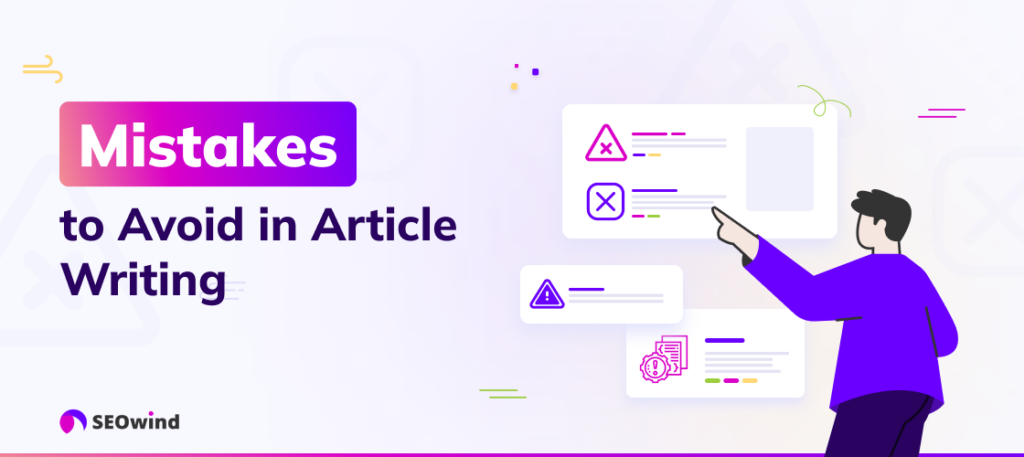
Regarding article writing, a few pitfalls can compromise the quality of your content. Knowing these and how to avoid them will enhance your work’s clarity, depth, and impact.
The first mistake often made is skimping on research. An article without solid underpinnings won’t merely be bland – it might mislead readers. Therefore, prioritize comprehensive investigation before penning down anything. Understanding common misconceptions or misinterpretations about your topic will strengthen your case.
Next, sidestep unnecessary jargon or excessively complex language. While showcasing an impressive vocabulary might seem appealing, remember that your primary objective is imparting information efficiently and effectively.
Moreover, failing to structure articles effectively represents another standard error. A structured piece aids in delivering complex ideas coherently. Maintaining a logical sequence facilitates reader comprehension, whether explaining a detailed concept or narrating an incident.
A piece lacking aesthetic allure can fail its purpose regardless of the value of its text. That’s where images come into play. Neglecting them is an all-too-common mistake among beginners. Relevant pictures inserted at appropriate junctures serve as visual breaks from texts and stimulate interest among readers.
Lastly, proofreading is vital in determining whether you can deliver a well-written article. Typos and grammatical errors can significantly undermine professional credibility while disrupting a smooth reading experience.
So, when pondering how articles are written, avoiding these mistakes goes a long way toward producing high-quality content that embodies both substance and style. Remember: practice is paramount when learning how to write excellent material!
How to Write an Article with SEOwind AI Writer?
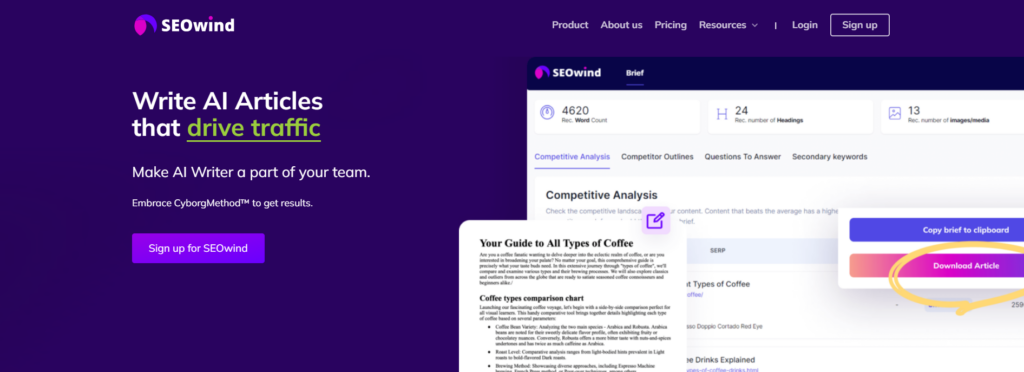
Harnessing the power of artificial intelligence has been a major step in many industries. One such significant tool is SEOwind AI Writer , which is critical for those curious about how to write an article leveraging AI. In this section, I’ll cover how you can effectively use SEOwind AI writer to create compelling articles.
Step 1: Create a Brief and Outline
The first step in writing an article revolves around understanding your audience’s interests and then articulating them in a comprehensive brief that outlines the content’s framework.
- Decide on the topic: What ideas will you share via your article?
- Define your audience: Knowing who will read your text significantly influences your tone, style, and content depth.
- Establish main points: Highlight the key points or arguments you wish to exhibit in your drafted piece. This helps create a skeleton for your work and maintain a logical flow of information.
With SEOwind:
- you get all the content and keyword research for top-performing content in one place,
- you can generate a comprehensive AI outline with one click,
- users can quickly create a title, description, and keywords that match the topic you’re writing about.
As insightful as it might seem, having a roadmap doubles as a guide throughout the creative process. SEOwind offers a user-friendly interface that allows the easy input of essential elements like keywords, title suggestions, content length, etc. These provide an insightful outline, saving time with an indispensable tool that demonstrates the practicality of article writing.
Step 2: Write an AI Article using SEOwind
Once you have a brief ready, you can write an AI article with a single click. It will consider all the data you provided and much more, such as copywriting and SEO best practices , to deliver content that ranks.
Step 3: Give it a Human Touch
Finally, SEOwind’s intuitive platform delivers impeccably constructed content to dispel any confusion about writing an article. The result is inevitably exceptional, with well-structured sentences and logically sequenced sections that meet your demands.
However, artificial intelligence can sometimes miss the unique personal touch that enhances relatability in communication—making articles more compelling. Let’s master adding individualistic charm to personalize articles so that they resonate with audiences.
Tailoring the AI-generated piece with personal anecdotes or custom inputs helps to break the monotony and bolster engagement rates. Always remember to tweak essential SEO elements like meta descriptions and relevant backlinks.
So, whether it’s enhancing casual language flow or eliminating robotic consistency, the slightest modifications can breathe life into the text and transform your article into a harmonious man-machine effort. Remember – it’s not just about technology making life easy but also how effectively we utilize this emerging trend!
Common Questions on how to write an article
Delving into the writing world, especially regarding articles, can often lead to a swarm of questions. Let’s tackle some common queries that newbies and seasoned writers frequently stumble upon to make your journey more comfortable and rewarding.
What is the easiest way to write an article?
The easiest way to write an article begins with a clear structure. Here are five simple steps you can follow:
- Identify your audience: The first thing you should consider while planning your article is who will read it? Identifying your target audience helps shape the article’s content, style, and purpose.
- Decide on a topic and outline: Determining what to write about can sometimes be a formidable task. Try to ensure you cover a topic you can cover effectively or for which you feel great passion. Next, outline the main points you want to present throughout your piece.
- Do the research: Dig deep into resources for pertinent information regarding your topic and gather as much knowledge as possible. An informed writer paves the way for a knowledgeable reader.
- Drafting phase: Begin with an engaging introduction followed by systematically fleshing out each point from your outline in body paragraphs before ending with conclusive remarks tying together all the earlier arguments.
- Fine-tune through editing and proofreading: Errors happen no matter how qualified or experienced a writer may be! So make sure to edit and proofread before publishing.
Keep these keys in mind and remain patient and persistent. There’s no easier alternative for writing an article.
How can I write an article without knowing about the topic?
We sometimes need to write about less familiar subjects – but do not fret! Here’s my approach:
- First off, start by thoroughly researching subject-centric reliable sources. The more information you have, the better poised you are to write confidently about it.
- While researching, take notes and highlight the most essential points.
- Create an outline by organizing these points logically – this essentially becomes your article’s backbone.
- Start writing based on your research and outlined structure. If certain aspects remain unclear, keep investigating until clarity prevails.
Getting outside your comfort zone can be daunting, but is also a thrilling chance to expand your horizons.
What is your process for writing an article quickly?
In terms of speed versus quality in writing an article – strikingly enough, they aren’t mutually exclusive. To produce a high-quality piece swiftly, adhere to the following steps:
- Establish purpose and audience: Before cogs start turning on phrase-spinning, be clear on why you’re writing and who will likely read it.
- Brainstorm broadly, then refine: Cast a wide net initially regarding ideas around your topic. Then, narrow down those areas that amplify your core message or meet objectives.
- Create a robust outline: A detailed roadmap prevents meandering during actual writing and saves time!
- Ignore perfection in the first draft: Speed up initial drafting by prioritizing getting your thoughts on paper over perfect grammar or sentence compositions.
- Be disciplined with edits and revisions: Try adopting a cut, shorten, and replace mantra while trimming fluff without mercy!
Writing quickly requires practice and strategic planning – but rest assured, it’s entirely possible!
Seasoned SaaS and agency growth expert with deep expertise in AI, content marketing, and SEO. With SEOwind, he crafts AI-powered content that tops Google searches and magnetizes clicks. With a track record of rocketing startups to global reach and coaching teams to smash growth, Tom's all about sharing his rich arsenal of strategies through engaging podcasts and webinars. He's your go-to guy for transforming organic traffic, supercharging content creation, and driving sales through the roof.
Table of Contents
- 1 What is an Article?
- 2 Objectives of Article Writing
- 3 What is the Format of an Article?
- 4 What Should Be in an Article?
- 5 How should you structure an article?
- 6 Tips for Writing a Good Article
- 7 Step By Step Guide for Article Writing
- 8 Common Mistakes to Avoid in Article Writing
- 9 How to Write an Article with SEOwind AI Writer?
- 10 Common Questions on how to write an article
Related Posts

- The Best AI Copywriter for Boosting Your SEO
- How to Humanize AI Content – 20+ Tactics to add Human Touch [+cheat sheet & webinar]
- Content Writing for SaaS – A Guide to Mastering SaaS Growth
- #100Posts30DaysChallenge
- Affiliate program
- Privacy Policy
- Terms and Conditions
Latest Posts
- Google March 2024 Core Update Explained: Key Changes for You and AI approach
- SEOwind vs MarketMuse vs Frase
- SEOwind vs Marketmuse vs Clearscope
- SEOwind vs Clearscope vs Frase
- SEOwind vs Surfer SEO vs Clearscope
- SEOwind vs Surfer SEO vs Frase
- SEOwind vs Jasper AI vs Frase
- SEOwind vs Rytr vs Jasper
- SEOwind vs Writesonic vs Rytr
- SEOwind vs Writesonic vs Copy.ai
© 2024 SEOwind.
- AI Article Writer
- Content Brief Generator
- Internal Links Plugin
- CyborgMethod Bootcamp
- Human vs AI Experiment
Privacy Overview
- WordPress.org
- Documentation
- Learn WordPress
- Suggestions
How to make a tabloid
The tabloid is a newspaper format characterized by its compact size and concise content. In this article, we will explore the technical steps to create a tabloid, from content planning to page design. Learning how to make a tabloid will allow editors and designers to optimize available space and offer readers an informative and visually appealing experience. Read on to discover all the technical aspects of this publishing style. [END
1. Introduction to the process of creating a tabloid
The process of creating a tabloid is a complex task that requires a methodical and thorough approach. In this post, a detailed guide will be provided Step by Step on how to carry out this process efficiently and effective. Tutorials, tips and practical examples will be presented, as well as useful tools that will facilitate the creation of the tabloid.
First of all, it is essential to have graphic design software to create the tabloid design. Adobe InDesign It is one of the most used tools in this field, as it offers a wide range of functions and features that allow you to achieve results. The future of television is here . Additionally, it is recommended to use pre-built tabloid templates to streamline the design process and ensure visual consistency.
Once the appropriate software has been selected, you should begin by defining the structure and content of the tabloid. It is recommended to make a preliminary outline that includes the different sections and sections that you want to include, such as articles, images, advertisements and headers. It is also important to take into account the target audience and adapt the content to their interests and preferences. Once the structure is defined, you can proceed to create the design using the graphic design tools and templates previously selected.
2. Step by step: Design and structure of a tabloid
In this section, you will learn how to design and structure a tabloid in a simple and efficient way. We will provide you with a step-by-step guide that will include all the details necessary to solve this problem . In addition, we will provide you with tutorials, tips, tools and examples to help you in the process.
Step 1: Define the format and dimensions of the tabloid . The first What should you do is to determine the format and dimensions of the tabloid you want to design. You can choose between different standard sizes, such as vertical or horizontal tabloid, and also consider the number of pages your design will have.
Step 2: Organize content and establish a visual hierarchy . Once you have defined the tabloid format, it is important to organize the content clearly and establish an effective visual hierarchy. Use bold headings, subheadings, and highlights to highlight the most important information and make it easy for the reader to read.
Step 3: Use graphic design tools and software . To create and structure a tabloid, it is essential to have graphic design tools and software. These programs will allow you to adjust the size of images, place texts correctly, apply styles and visual effects, as well as make final corrections and adjustments to the design.
By following these steps, you will be on your way to designing and structuring a tabloid professionally. Follow our recommendations and use the appropriate tools to achieve quality results in your designs. Always remember to establish a clear visual hierarchy and highlight the most important information to capture the reader's attention.
3. Recommended tools and software for creating a tabloid
To create a tabloid, it is essential to have adequate tools and software that facilitate the design and layout process. Below we will mention some recommended options:
1. Adobe InDesign: This program editorial design professional provides all the functions necessary to create tabloids of efficient way and precise. It allows the creation of complex page layouts, the management of text and images, and the export in various formats. In addition, it has an intuitive interface and numerous pre-designed templates that can serve as a starting point for your tabloid.
2.Microsoft Publisher: This desktop layout application is a more accessible and user-friendly option for creating tabloids. With a wide range of design tools, it allows you to work with images, text, tables and shapes easily. It also offers templates and tutorials to facilitate the process of designing and customizing your tabloid.
3.Canva: If you're looking for an even more affordable option, Canva is an online tool that provides a variety of templates, images, and resources to help you create a professional-looking tabloid. Plus, it has an easy-to-use interface and team collaboration options. Although its functionality is more limited compared to Adobe InDesign or Microsoft Publisher, Canva is still a convenient option for smaller-scale projects.
4. Selection of content and themes for an effective tabloid
It requires a strategic and careful approach. It is important to consider the target audience and their interests, as well as the goals and objectives of the tabloid. Here are some guidelines to help in this process:
1. Market research: Before selecting topics and content, it is essential to conduct market research. This involves analyzing the preferences of the target audience, current market trends and competitors. This is where tools like surveys, data analysis, and interviews can come in handy. Based on this research, the most relevant and attractive topics for the tabloid can be identified.
2. Definition of objectives: Once you have a clear understanding of the market and the target audience, it is necessary to define the objectives of the tabloid. Is it intended to inform, entertain, educate or persuade readers? This definition will allow establishing the most appropriate topics and content to achieve these objectives. Additionally, it is important to consider the tone and style that will be used to convey the message. effectively .
3. Variety of content: An effective tabloid must offer a variety of content to maintain readers' interest. This includes relevant news, features, interviews, practical advice and useful resources. In addition, it is advisable to include attractive visual content such as images, illustrations and graphics. The diversity of topics and formats will help capture the attention of different types of readers and keep them engaged.
In short, it requires a strategic approach based on understanding the target audience and the tabloid's objectives. Market research, defining objectives, and including a variety of content are key elements in this process. With a careful and planned approach, you can create an attractive and relevant tabloid that captures attention and meets the needs of readers.
5. How to write impactful headlines for your tabloid
Do you want to capture your readers' attention from the first glance? The key is to write impactful headlines for your tabloid. An attractive and powerful headline can make the difference between your news going unnoticed or becoming the center of attention. Below, we offer you some tips and techniques to achieve this:
1. Use striking and descriptive words: Make sure your headlines contain powerful, descriptive words that convey the central theme of the article. Avoid vague or generic words, and opt for terms that generate excitement and curiosity in your readers.
2. Be brief and direct: Shocking headlines pull no punches. You must be able to communicate the main message in just a few words. Write concisely and directly, eliminating any unnecessary information.
3. Generates intrigue and suspense: One of the secrets to creating impactful headlines is to arouse the reader's curiosity. You can do this by asking intriguing questions, revealing an unexpected surprise, or using enigmatic phrases that leave the reader wanting to know more. Don't give all the details in the headline, but invite you to read the entire article to discover the answer.
6. Layout and graphic design strategies for an attractive tabloid
In the design and layout of a tabloid, it is crucial to implement strategies that make it attractive at first glance and easy to read. Here are some strategies you can follow to achieve this:
1. Use a clear and orderly structure: Organize information hierarchically, using headings and subheadings to highlight different sections. It is also important to use grids and layout guides to maintain a uniform and balanced appearance.
2. Choose appropriate fonts: The fonts chosen must be legible and consistent with the style and content of the tabloid. Avoid using more than three types of fonts and make sure they are compatible in both print and digital versions.
3. Harness the power of images: Illustrations, photographs and graphics can bring the tabloid to life and capture the reader's attention. Make sure you use high-quality images in the appropriate format. Additionally, play with the size and placement of images to create a visually appealing design. Remember that the balance between text and images is essential for a good layout.
By following these layout and graphic design strategies, you will be able to create an attractive and effective tabloid. Don't forget that the main objective is to facilitate reading and transmit information in a clear and concise manner. Remember to use tools and resources available online to improve your design skills and experiment with different styles and designs. Dare to be creative and stand out from the crowd with your tabloid!
7. Importance of visual hierarchy in the layout of a tabloid
Visual hierarchy plays a crucial role in tabloid layout, as it allows information to be efficiently organized and guide the reader through the content in a clear and concise manner. Correct use of visual hierarchy ensures that the most important elements stand out and capture the reader's attention, while less relevant details are presented in a secondary way.
To achieve an effective visual hierarchy, it is essential to consider several aspects. First, using different font sizes and styles will help differentiate between headings, titles, and body text. Additionally, graphic elements such as lines, boxes, and boxes can be used to separate and highlight specific sections of the tabloid. Likewise, color contrast can be used to draw attention to key elements or to create a clear division between different content areas.
Another important factor to take into account is the strategic placement of elements in the design. The most relevant elements should be placed in a prominent and easy-to-view location, such as the center or top of the page. Additionally, it is recommended to use white space around key elements to highlight them and avoid visual clutter. However, it is crucial to maintain a visual balance in the design, avoiding information overload and ensuring that the tabloid is attractive and easy to read for the target audience.
8. Appropriate use of images and graphics in a tabloid
When it comes to a tabloid, it is essential to use images and graphics appropriately to attract readers' attention and enhance the visual presentation of the content. Here are some top tips to get the most out of the images in your tabloid:
1. Select relevant, high-quality images: It is essential to choose images that are relevant to the topic or article you are presenting. Also, make sure that the images selected are of high quality and have an appropriate resolution to avoid them appearing pixelated or blurry.
2. Suitable size: Although the size of the images may vary depending on the layout of your tabloid, it is important to ensure that they are neither too small nor too large. An image that is too small can go unnoticed, while an image that is too large can overwhelm the reader and distract them from the main content. Find the right balance and resize images as needed.
3. Positioning and care of graphics: Strategically place images and graphics in your tabloid so that they complement the text and help convey the information of effective way . Also, make sure the graphics are properly aligned and do not overlap other design elements. Use image editing tools to crop, resize, or adjust graphics as needed for a polished, professional look.
9. Typography and editorial style for a professional tabloid
Choosing an appropriate typography and an appropriate editorial style are essential elements to achieve a professional design in a tabloid. First of all, it is important to select a legible and easy-to-read font for the target audience. It is recommended to avoid very ornate or unusual fonts, as they can make the content difficult to understand. Sans-serif fonts are usually a safe choice due to their clarity and simplicity. Some popular options include Arial, Helvetica, and Verdana.
In addition to typography, editorial style also plays a crucial role in the presentation of a professional tabloid. It is necessary to establish consistent style rules regarding the use of bold, italics, font size, alignment, among others. This ensures that all sections of the tabloid have a uniform and coherent appearance. Sparing use of design elements, such as colors or shadows, can also add an interesting visual touch to the tabloid design.
An important aspect to keep in mind when designing a professional tabloid is visual hierarchy. It is essential to organize the information in a clear and hierarchical way, using different font sizes, colors and styles to highlight the most important elements. For example, main headlines should be larger in size and bold, while subheadings could be smaller in size but still bold to differentiate themselves from the main text. This visual hierarchy helps readers navigate content efficiently and quickly understand the structure of the tabloid.
In summary, the appropriate choice of typography and editorial style are essential to achieve a professional design in a tabloid. It is recommended to use legible and simple fonts, establish consistent editorial style rules, and apply visual hierarchy to highlight the most important elements. With these tips , you will be able to create an attractive and quality tabloid that will capture the attention of your audience.
10. Printing and distribution: Key aspects for a quality tabloid
When creating a quality tabloid, it is crucial to pay attention to the key aspects of printing and distribution. These two elements play a critical role in the success of your post and the impact you will have on your target audience. Here are some key tips to help you achieve a flawless tabloid:
- Selection of quality paper: Paper is one of the most important components of a tabloid. Make sure you choose a good quality paper that improves the readability and visual appearance of your content. Consider factors such as weight, texture and brightness of the paper to achieve optimal results.
- Professional printing: When printing your tabloid, it is advisable to seek the services of a professional printing company. These printers have the machinery and experience necessary to achieve high quality printing and accurate colors. Remember to provide the printer with the files in an appropriate format and follow their guidelines to ensure optimal results.
11. Content and formatting optimization for tabloid readers
In this section, we'll show you how to optimize the content and formatting of your articles for tabloid readers. In order to capture the attention of this target audience, it is essential to take into account certain key aspects.
1. Use striking headlines: Tabloid readers are often attracted to eye-catching headlines with a sensationalist touch. Bet on words that generate emotion and curiosity in your titles to increase the chances that the reader will be interested in your content.
2. Organize your content into concise sections: Tabloid readers often prefer short, easy-to-read articles. Divide your content into concise sections and use descriptive subheadings so readers can navigate quickly. Additionally, keep short paragraphs and use bullet points or lists to highlight important information.
3. Include eye-catching images and graphics: Tabloid readers are drawn to visual content. Be sure to include eye-catching images and graphics that complement your content and capture the reader's attention. Use high-quality images and make sure they are relevant to the topic of the article.
12. Promotion and positioning of a tabloid in the publishing market
In this section, we are going to analyze in detail the promotion and positioning strategies that can be implemented to highlight a tabloid. in the market editorial.
1. Identify the target audience: It is essential to know who our tabloid is aimed at. Carrying out a market analysis and defining the demographic and psychographic profile of our target audience will allow us to adapt our promotion strategy more effectively.
2. Generate relevant and quality content: The success of a tabloid lies in offering interesting and useful information to readers. It is important to have a trained writing team that generates attractive and up-to-date content. In addition, expert columnists in different areas can be included, which will provide added value to our tabloid.
13. Legal and ethical considerations in creating a tabloid
When creating a tabloid, it is essential to take into account legal and ethical considerations to ensure fair and responsible publication. These considerations will not only help avoid legal problems, but will also ensure that the content is ethically appropriate and respects the rights of others.
First, it is important to keep defamation and slander laws in mind when writing articles and headlines. Avoid posting false or misleading information about people or entities, as this could result in legal action. Also, be sure to respect people's privacy and get their consent to post any content related to their lives or activities.
Another key consideration is respect for the Copyright and intellectual property. Never reproduce or publish protected content without the permission of the rights holder. If you want to use material from other sources, be sure to obtain the appropriate copyright or use it in accordance with fair use laws. Additionally, always cite sources appropriately to avoid plagiarism and give credit to the original owners of the information.
14. Tips for the maintenance and continuous updating of a tabloid
The constant maintenance and updating of a tabloid is essential to guarantee its correct functioning and maximize its effectiveness. Below are some helpful tips to accomplish these tasks efficiently:
1. Make a regular backup of your tabloid: Before making any changes or updates to your tabloid, be sure to make a complete backup of the files and the database . This will allow you to revert the changes in case of any eventuality or error.
2. Maintain an organized file structure: To facilitate updating and maintaining the tabloid, it is advisable to maintain an organized folder structure. Separate files into sections and use clear, descriptive names to make them easy to identify.
3. Use automation tools: To speed up the update process, you can use automation tools. These tools allow you to make changes to multiple sections of the tabloid simultaneously, reducing the time needed to update and keep information up to date.
In conclusion, creating a tabloid requires careful planning and technical execution. From content selection to graphic design, each step is crucial to achieve a quality final product. It is important to take into account the formats and specifications required for printing, as well as the appropriate choice of fonts, colors and visual elements. In addition, it is essential to have good layout software that speeds up the process and allows precise control over all aspects of the tabloid. With this knowledge and tools, anyone can venture into creating tabloids, whether for personal use or professional projects. Always remember to be aware of the latest trends and practices in editorial design to keep your tabloid updated and attractive to readers.
You may also be interested in this related content:
- 15 Best Alternatives to TutuApp
- How to make an A3 format in Word
- How to Recover My Google Account from My Cell Phone
I am Sebastián Vidal, a computer engineer passionate about technology and DIY. Additionally, I am the creator of tecnobits.com, where I share tutorials to make technology more accessible and understandable for everyone.
NEWSPAPER WRITING How to write a tabloid article

NEWSPAPER WRITING How to write a tabloid article.
THE HEADLINE To be successful and eye-catching, tabloid headlines should contain some of these elements: • Short, snappy phrases • Puns, or plays on words • Humour • An element of intrigue
SOME EXAMPLES You are now going to look at some examples of tabloid headlines. For each one, think about: • What techniques the writer has used to grab your attention • What the article is about
EXAMPLE 1 TSUNAMI HEIR LIFT Techniques used: This article is about:
EXAMPLE 1 TSUNAMI HEIR LIFT Techniques used: - Pun on the words “heir” and “air” This article is about: - Princes William and Harry helping out with aid relief to Asia
EXAMPLE 2 WE WEPT FOR WAVE ORPHANS Techniques used: This article is about:
EXAMPLE 2 WE WEPT FOR WAVE ORPHANS Techniques used: - alliteration: repeating the “w” sound This article is about: - Royal family express their grief over the tsunami disaster
EXAMPLE 3 IT'S TUM KIND OF MIRACLE Techniques used: This article is about:
EXAMPLE 3 IT'S TUM KIND OF MIRACLE Techniques used: -The word “tum” sounds like “some” -Doesn’t give away much information This article is about: -A woman with an artificial stomach gives birth to the baby doctors said she’d never have
EXAMPLE 4 DOWNLOADS GO UP LOADS Techniques used: This article is about:
EXAMPLE 4 DOWNLOADS GO UP LOADS Techniques used: -Contrast of “down” and “up” – creates humour -Could be about a number of different things - vague This article is about: -Music sales on the internet rising above CD sales for the first time
TABLOID LANGUAGE You are now going to look at an article from two different newspapers. The article is about the same topic, but you will notice great differences between the two. Try to note these differences in your jotter in the form of a table…
TABLOID LANGUAGE Article 1 Article 2 What differences are there in the headlines? Long, detailed Short, snappy How long are the sentences in the article? Long, complex Short, simple How long are the paragraphs? 3 or 4 sentences 1 -3 sentences How much detail is included? Did you understand all of the words? Do you think this came from a tabloid?
TABLOID LANGUAGE Having looked at a tabloid article and the techniques that tabloid writers use, you are going to construct your own tabloid article. First, you must work with a partner and attempt to construct a suitable headline. Remember, headlines should contain at least one of the following: • Short, snappy phrases • Puns, or plays on words • Humour • An element of intrigue
HEADLINE FEEDBACK Gather the class’ ideas together, and decide which headline you like best:
WRITING YOUR ARTICLE Now, you are going to continue to write the rest of your article. Look over the example tabloid article you were given for ideas of how you should phrase your work. Remember that your article should include: • Details of the event • Interviews with eye-witnesses • Speculation about what may actually have happened Your finished article should fill about TWO jotter pages
This powerpoint was kindly donated to www. worldofteaching. com http: //www. worldofteaching. com is home to over a thousand powerpoints submitted by teachers. This is a completely free site and requires no registration. Please visit and I hope it will help in your teaching.
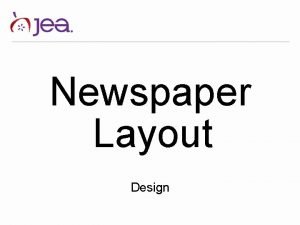
- Skip to main content
- Keyboard shortcuts for audio player
Your Health
- Treatments & Tests
- Health Inc.
- Public Health
Why writing by hand beats typing for thinking and learning
Jonathan Lambert

If you're like many digitally savvy Americans, it has likely been a while since you've spent much time writing by hand.
The laborious process of tracing out our thoughts, letter by letter, on the page is becoming a relic of the past in our screen-dominated world, where text messages and thumb-typed grocery lists have replaced handwritten letters and sticky notes. Electronic keyboards offer obvious efficiency benefits that have undoubtedly boosted our productivity — imagine having to write all your emails longhand.
To keep up, many schools are introducing computers as early as preschool, meaning some kids may learn the basics of typing before writing by hand.
But giving up this slower, more tactile way of expressing ourselves may come at a significant cost, according to a growing body of research that's uncovering the surprising cognitive benefits of taking pen to paper, or even stylus to iPad — for both children and adults.
Is this some kind of joke? A school facing shortages starts teaching standup comedy
In kids, studies show that tracing out ABCs, as opposed to typing them, leads to better and longer-lasting recognition and understanding of letters. Writing by hand also improves memory and recall of words, laying down the foundations of literacy and learning. In adults, taking notes by hand during a lecture, instead of typing, can lead to better conceptual understanding of material.
"There's actually some very important things going on during the embodied experience of writing by hand," says Ramesh Balasubramaniam , a neuroscientist at the University of California, Merced. "It has important cognitive benefits."
While those benefits have long been recognized by some (for instance, many authors, including Jennifer Egan and Neil Gaiman , draft their stories by hand to stoke creativity), scientists have only recently started investigating why writing by hand has these effects.
A slew of recent brain imaging research suggests handwriting's power stems from the relative complexity of the process and how it forces different brain systems to work together to reproduce the shapes of letters in our heads onto the page.
Your brain on handwriting
Both handwriting and typing involve moving our hands and fingers to create words on a page. But handwriting, it turns out, requires a lot more fine-tuned coordination between the motor and visual systems. This seems to more deeply engage the brain in ways that support learning.

Shots - Health News
Feeling artsy here's how making art helps your brain.
"Handwriting is probably among the most complex motor skills that the brain is capable of," says Marieke Longcamp , a cognitive neuroscientist at Aix-Marseille Université.
Gripping a pen nimbly enough to write is a complicated task, as it requires your brain to continuously monitor the pressure that each finger exerts on the pen. Then, your motor system has to delicately modify that pressure to re-create each letter of the words in your head on the page.
"Your fingers have to each do something different to produce a recognizable letter," says Sophia Vinci-Booher , an educational neuroscientist at Vanderbilt University. Adding to the complexity, your visual system must continuously process that letter as it's formed. With each stroke, your brain compares the unfolding script with mental models of the letters and words, making adjustments to fingers in real time to create the letters' shapes, says Vinci-Booher.
That's not true for typing.
To type "tap" your fingers don't have to trace out the form of the letters — they just make three relatively simple and uniform movements. In comparison, it takes a lot more brainpower, as well as cross-talk between brain areas, to write than type.
Recent brain imaging studies bolster this idea. A study published in January found that when students write by hand, brain areas involved in motor and visual information processing " sync up " with areas crucial to memory formation, firing at frequencies associated with learning.
"We don't see that [synchronized activity] in typewriting at all," says Audrey van der Meer , a psychologist and study co-author at the Norwegian University of Science and Technology. She suggests that writing by hand is a neurobiologically richer process and that this richness may confer some cognitive benefits.
Other experts agree. "There seems to be something fundamental about engaging your body to produce these shapes," says Robert Wiley , a cognitive psychologist at the University of North Carolina, Greensboro. "It lets you make associations between your body and what you're seeing and hearing," he says, which might give the mind more footholds for accessing a given concept or idea.
Those extra footholds are especially important for learning in kids, but they may give adults a leg up too. Wiley and others worry that ditching handwriting for typing could have serious consequences for how we all learn and think.
What might be lost as handwriting wanes
The clearest consequence of screens and keyboards replacing pen and paper might be on kids' ability to learn the building blocks of literacy — letters.
"Letter recognition in early childhood is actually one of the best predictors of later reading and math attainment," says Vinci-Booher. Her work suggests the process of learning to write letters by hand is crucial for learning to read them.
"When kids write letters, they're just messy," she says. As kids practice writing "A," each iteration is different, and that variability helps solidify their conceptual understanding of the letter.
Research suggests kids learn to recognize letters better when seeing variable handwritten examples, compared with uniform typed examples.
This helps develop areas of the brain used during reading in older children and adults, Vinci-Booher found.
"This could be one of the ways that early experiences actually translate to long-term life outcomes," she says. "These visually demanding, fine motor actions bake in neural communication patterns that are really important for learning later on."
Ditching handwriting instruction could mean that those skills don't get developed as well, which could impair kids' ability to learn down the road.
"If young children are not receiving any handwriting training, which is very good brain stimulation, then their brains simply won't reach their full potential," says van der Meer. "It's scary to think of the potential consequences."
Many states are trying to avoid these risks by mandating cursive instruction. This year, California started requiring elementary school students to learn cursive , and similar bills are moving through state legislatures in several states, including Indiana, Kentucky, South Carolina and Wisconsin. (So far, evidence suggests that it's the writing by hand that matters, not whether it's print or cursive.)
Slowing down and processing information
For adults, one of the main benefits of writing by hand is that it simply forces us to slow down.
During a meeting or lecture, it's possible to type what you're hearing verbatim. But often, "you're not actually processing that information — you're just typing in the blind," says van der Meer. "If you take notes by hand, you can't write everything down," she says.
The relative slowness of the medium forces you to process the information, writing key words or phrases and using drawing or arrows to work through ideas, she says. "You make the information your own," she says, which helps it stick in the brain.
Such connections and integration are still possible when typing, but they need to be made more intentionally. And sometimes, efficiency wins out. "When you're writing a long essay, it's obviously much more practical to use a keyboard," says van der Meer.
Still, given our long history of using our hands to mark meaning in the world, some scientists worry about the more diffuse consequences of offloading our thinking to computers.
"We're foisting a lot of our knowledge, extending our cognition, to other devices, so it's only natural that we've started using these other agents to do our writing for us," says Balasubramaniam.
It's possible that this might free up our minds to do other kinds of hard thinking, he says. Or we might be sacrificing a fundamental process that's crucial for the kinds of immersive cognitive experiences that enable us to learn and think at our full potential.
Balasubramaniam stresses, however, that we don't have to ditch digital tools to harness the power of handwriting. So far, research suggests that scribbling with a stylus on a screen activates the same brain pathways as etching ink on paper. It's the movement that counts, he says, not its final form.
Jonathan Lambert is a Washington, D.C.-based freelance journalist who covers science, health and policy.
- handwriting
Trump could face a $100 million tax bill after the IRS says he tried to write off the same losses twice on his Chicago skyscraper
- Trump could face a $100 million tax bill after the IRS said he tried to write off the same losses twice.
- The losses are tied to the 92-story Trump International Hotel and Tower in Chicago.
- The IRS conducted a "high-level legal review" before it began their inquiry, the Times reported.

Former President Donald Trump could face a $100 million tax bill after the IRS said he twice sought to write off the same losses on his struggling 92-story Chicago skyscraper, according to a New York Times and ProPublica report.
The Trump International Hotel and Tower Chicago, built on the site of the former Chicago Sun-Times headquarters, opened during the Great Recession in 2009. The vast condo-hotel project was saddled with cost overruns, according to the report.
In the IRS inquiry, acquired by The Times and ProPublica, the agency said Trump tried to claim tax benefits from financial losses associated with the project and that he practically wrote off those losses twice.
Trump's first tax write-off for the Chicago tower came in his 2008 tax return, when sales at the building faltered below expectations. Trump claimed that his share of investment in the structure amounted to what the tax code classified as "worthless" — largely because the debt he incurred on the building demonstrated that he wouldn't profit.
In that year's tax return, Trump noted that he lost up to $651 million on the project, according to The Times and ProPublica.
The Times and ProPublica reported that there weren't any signs that the IRS initially pushed back against Trump's first claim, which surprised tax experts who spoke with the outlets.
Related stories
Trump and his tax advisors in 2010 tried to obtain additional benefits from the skyscraper project by transitioning the company that owned the building into a new partnership. But Trump wielded the levers of power for both companies. And for the next decade, he used the business move to try to claim $168 million in new losses.
Because of the nature of Trump's claims, the IRS conducted a "high-level legal review" before they began their inquiry, according to the report.
After looking at the inquiry, The Times and ProPublica — and tax experts — concluded that the revision pursued by the IRS would give Trump an updated tax bill exceeding $100 million, excluding any additional penalties.
Eric Trump, the executive vice president of the Trump Organization, responded to the report, stating that the company was "confident" in its actions regarding the Chicago skyscraper.
"This matter was settled years ago, only to be brought back to life once my father ran for office," he said in a statement to the Times and ProPublica. "We are confident in our position, which is supported by opinion letters from various tax experts, including the former general counsel of the IRS."
Business Insider reached out to the Trump campaign for comment.
News of the IRS inquiry comes during a presidential year in which Trump is set to once again be on the ballot, with his personal finances and the extent of his wealth continuing to be a major point of discussion in the race.
A court ordered Trump, in January, to pay $83.3 million in defamation damages to the writer E. Jean Carroll. (In a separate civil trial last year, a New York jury found the former president liable for the sexual abuse of Carroll.)
And, in February, a New York judge ordered Trump to pay $355 million in penalties for what the judge said was a scheme by the former president to fraudulently inflate the value of his properties. Prosecutors in April then accepted a $175 million bond from Trump in the civil fraud case, which the ex-president posted to block the larger judgment as he goes through the appeals process.
Watch: The biggest revelations from Trump's tax returns
- Main content
Exclusive: Ex-tabloid publisher David Pecker 'swatted' on day of Trump trial testimony
- Medium Text
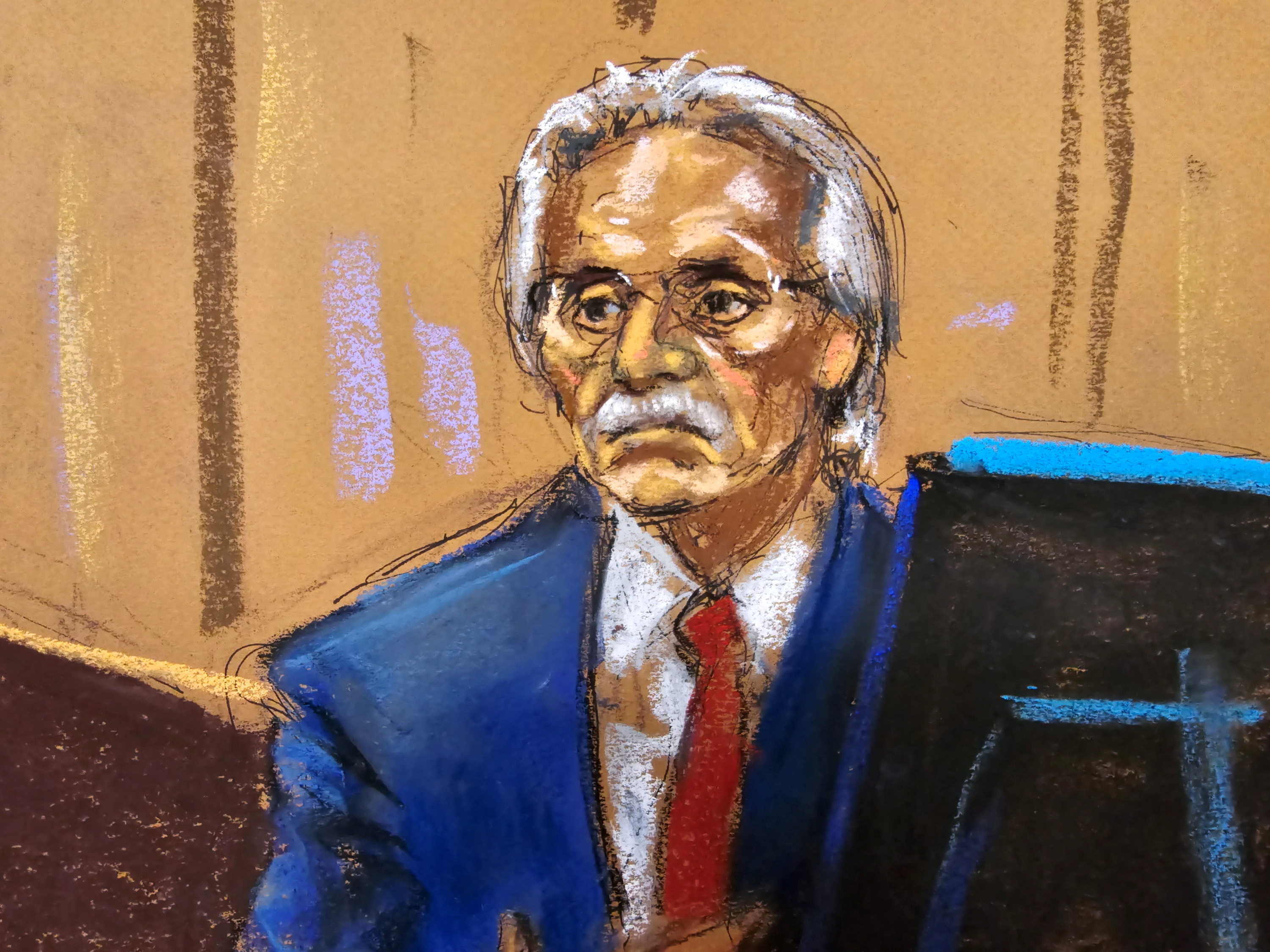
Sign up here.
Reporting by Alexandra Ulmer, Editing by Ross Colvin and Howard Goller
Our Standards: The Thomson Reuters Trust Principles. New Tab , opens new tab

Thomson Reuters
Alexandra covers the 2024 U.S. presidential race, with a focus on Republicans, donors and AI. Previously, she spent four years in Venezuela reporting on the humanitarian crisis and investigating corruption. She has also worked in India, Chile and Argentina. Alexandra was Reuters' Reporter of the Year and has won an Overseas Press Club award.
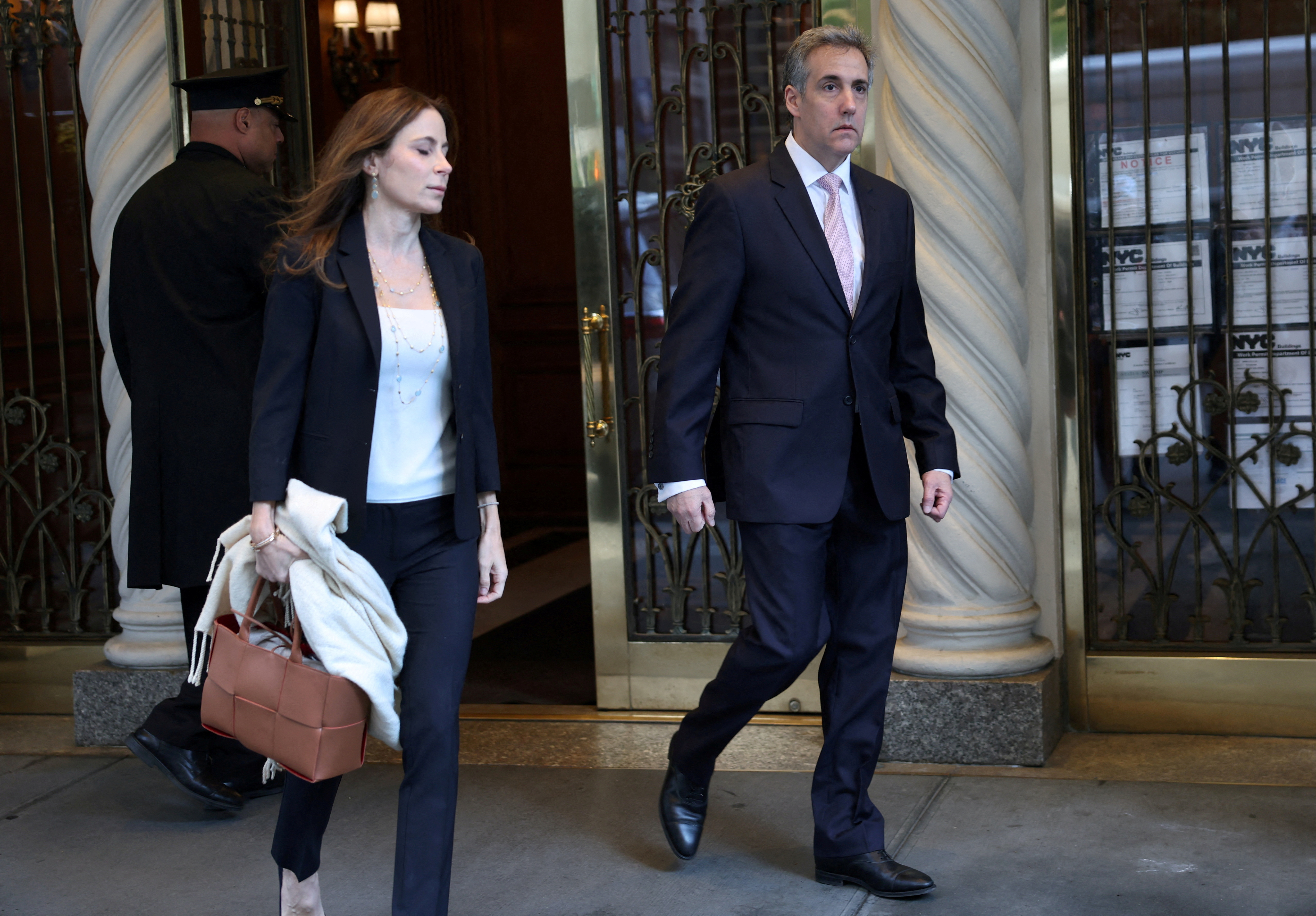
World Chevron

China denies Philippine report of "artificial island" in disputed waters
The Philippines said on Monday that it would keep a closer guard on reefs, shoals and islets in its exclusive economic zone in the South China Sea, as China denied accusations of trying to build an artificial island in the disputed waters.

Turkish police arrested a man suspected of trying to smuggle valuable poisonous spiders and scorpions out of the country, with state media identifying the suspect on Monday as a curator at New York's American Museum of Natural History.
Pro-Palestinian protesters on Monday occupied university buildings in the Dutch cities of Amsterdam, Groningen and Eindhoven, condemning Israel's war in Gaza, the Dutch protest group behind the action said in a statement.
Ukraine said on Monday it thwarted a Russian operation to set off a series of bomb attacks in builder's markets and near a cafe in the capital of Kyiv, and at a defence enterprise in the western city of Lviv.

Everything Prince Harry Said About Princess Charlotte Tabloid Story
W hen Prince Harry published his memoir Spare in 2023 , he provided fans with an unparalleled glimpse behind palace walls into the realities faced by members of the royal family, from himself and wife Meghan Markle , to his father, brother and even nephews and niece.
One previously unknown revelation in his book was Harry's response to a 2019 tabloid story that claimed the flower crown worn by Princess Charlotte as a bridesmaid at his wedding a year earlier had the potential to have poisoned her.
The story broke, he revealed, as he and Meghan announced three major lawsuits against the tabloid press. Meghan sued Associated Newspapers Limited over the publication of a private letter she had written to her father ( a case she later won ) and Harry sued Mirror Group Newspapers and News Group Newspapers over allegations of historic unlawful information gathering.
The tabloid story drew a link between Meghan and the floral crowns, and its connection to his then 4-year-old niece emboldened Harry in his decision to press ahead with litigation against publishers, he revealed.
Here, Newsweek looks at everything Prince Harry said about the 2019 tabloid story concerning Charlotte.
'I Felt Energized'
In his memoir, Harry revealed the decision-making process behind an announcement that was made in October 2019 revealing that he and Meghan were suing publishers of the tabloid press.
The statement was issued in Harry's name on October 1, while the couple were enjoying a successful tour of South Africa . In it, Harry drew a line in the sand over Meghan's treatment by the press, writing: "My wife has become one of the latest victims of a British tabloid press that wages campaigns against individuals with no thought to the consequences—a ruthless campaign that has escalated over the past year, throughout her pregnancy and while raising our newborn son."
The couple faced a critical response to their lawsuits by the media and, according to Harry's memoir, from high-profile figures within the monarchy.
When on October 13, the Express newspaper's website published an article with the headline "How Meghan Markle's flowers may have put Princess Charlotte's life at risk," the prince said he felt "energized" by his litigation decision.
The story highlighted the inclusion of the flower "lily of the Valley" in the headdresses worn by Meghan's bridesmaids at the royal wedding a year earlier, noting that if ingested the plant can have a deadly effect.
Prince Harry in Spare "Shortly after announcing our lawsuit I felt energized by a ghastly story in the Express . 'How Meghan Markle's flowers may have put Princess Charlotte's life at risk.' "This latest 'scandal' concerned the flower crowns worn by our bridesmaids, more than a year earlier. Included in the crowns were a few lilies of the valley, which can be poisonous to children. Provided the children eat the lilies. Even then, the reaction would be discomfort, concerning to parents, but only in the rarest cases would such a thing be fatal."
'The Story of Meghan the Murderess'
Harry suggested to his readers that the story was an example of a piece of tabloid sensationalism and that its hysterical response was not raised when Princess Kate or Princess Diana included lily of the valley in their bridal arrangements.
"Never mind all that," Harry wrote. "The story of Meghan the Murderess was just too good."
Prince Harry in Spare "Never mind that an official florist put together these crowns. Never mind that it wasn't Meg who made this 'dangerous decision.' Never mind that previous royal brides, including Kate and my mother, had also used lilies of the valley. Never mind all that. The story of Meghan the Murderess was just too good. "An accompanying photo showed my poor little niece wearing her crown, face contorted in a paroxysm of agony, or a sneeze. Alongside this photo was a shot of Meg looking sublimely unconcerned about the imminent death of this angelic child."
Kensington Palace, the private office that acts for Prince William and Kate, did not respond to comments made by Harry in Spare . This was in line with a blanket "no comment" position adopted by King Charles III at Buckingham Palace.
James Crawford-Smith is Newsweek 's royal reporter, based in London. You can find him on X (formerly Twitter ) at @jrcrawfordsmith and read his stories on Newsweek
's The Royals Facebook page .
Do you have a question about King Charles III, William and Kate, Meghan and Harry, or their family that you would like our experienced royal correspondents to answer? Email [email protected]. We'd love to hear from you.
Start your unlimited Newsweek trial

- Share full article
Advertisement
Subscriber-only Newsletter
No, Donald Trump, Biden’s Economy Is Not Like Weimar Germany’s

By Peter Coy
Opinion Writer
At a May 1 rally in Waukesha, Wis., Donald Trump said that when he was president “we had no inflation,” and that now “we have record horrible inflation” that is “getting worse.” All three of those claims are, of course, incorrect. Trump also described inflation as “a country buster” that destroyed Germany, presumably referring to the hyperinflation of 1923, which was the year of Adolf Hitler’s failed beer-hall putsch.
Even for Trump, who loves to work up a crowd, that’s too far.
President Biden does have an inflation problem, but it’s not a Weimar Germany kind of problem. Economists expect that when the Bureau of Labor Statistics reports the Consumer Price Index for April next week, the annual change will come in around 3.4 percent. Contrast that with Germany in 1923, when people paid for goods with wheelbarrows of cash and burned bank notes to keep themselves warm. To compare the United States’ modestly-above-target inflation with Germany’s hyperinflation is inflated hype.
I won’t get into why Americans are so upset about inflation that they might choose Trump over Biden in November. Many commentators, including me and my Opinion colleagues Binyamin Appelbaum and Paul Krugman , have taken shots at that question.
I want to look at a different question, which is whether inflation would be lower if Trump won. Or, as I suspect, higher.
When I wrote about the economic outlooks under a second Biden term and another Trump term , one clear message I heard from economists was that many of Trump’s priorities could reignite inflation. The most obvious is his threat to raise tariffs on almost all imports, and raise them more on imports from China. The cost of those tariffs would be borne in part by the exporting nations, but even more by American consumers and industry. “I think we should have a ring around the collar” of the U.S. economy, Trump told Fox Business last year, apparently mixing up old laundry detergent commercials with the mercantilist metaphor of a protective ring of defense around domestic industry.
Trump also wants to extend all of the tax cuts in the 2017 Tax Cuts and Jobs Act, many of which are scheduled to expire at the end of 2025, which would keep budget deficits high. That would be inflationary, although only moderately so, because those cuts are already in place and most of the continued dollar savings would go to upper-income households, which have a lower propensity to consume out of each dollar saved.
Deporting undocumented immigrants — he has promised “the largest domestic deportation operation in American history” — is a big applause line for Trump on the campaign circuit. But that would push up labor costs, also stoking inflation.
One other way Trump could fuel inflation would be by pressuring the Federal Reserve to go along with lowering interest rates to juice economic growth. That’s something he repeatedly sought from Federal Reserve Chair Jerome Powell during his presidency. But Powell has made it clear that he doesn’t take orders from the White House. His term as chair ends on May 15, 2026 .
If the next president doesn’t reappoint Powell as chair, he has the option to finish out his term as governor, which ends in January 2028, although he might choose retirement. One other seat comes up for grabs in January 2026, and there could be other openings on the seven-member board in the coming four years if other governors choose not to serve out their terms.
To summarize, there was not zero inflation when Trump was president. It is not at a record high now. It is not rising. It is not making the United States go bust. And Trump’s policies would most likely not help the situation. If this were just hot air on the campaign trail, we might be able to ignore it. But Trump has a track record of doing some pretty crazy things. If he is re-elected, letting prices inflate once again might well be one of them.
The Readers Write
You wrote about mortgage portability . There is a device for “moving” a mortgage to secure a different piece of property and it is commonly used, albeit for a different reason/form, in commercial transactions. Collateral (mortgage) “spreader agreements” are often used to encumber new property to secure an existing or “old” debt. There are already procedures in place (in my opinion) that could allow for this in securitized trusts. In practice, this is no more complicated than to qualify the new property, issue a new or amended title policy and “close the deal.”
The fact that the residential mortgage industry doesn’t want this is completely addressed in your article. They simply do not see an incentive to work that hard.
James Michael Costello Cape Coral, Fla.
I appreciated your discussion of what might happen if the perceived risk of investing in the United States increases. I summarize related studies from a broad set of countries in this report on the financial and economic dangers of democratic backsliding. Three themes emerge: First, weak rule of law reduces investment. Second, political uncertainty often disrupts asset markets. Third, political actors who seek to undermine democratic practices also often have a populist, anti-globalization orientation.
The United States is not immune from political risk. And it is difficult for investors to diversify away from risks that emanate from the center of the global financial system.
Layna Mosley Princeton, N.J. The writer is a professor of politics and international affairs at Princeton.
Concerning your newsletter on risks of the United States:
The dollar may be shaky. The yen is slowing down. The euro ain’t heroic. The ruble is a clown. The only currency not bum I think is gold-pressed latinum .
Tim Torkildson Provo, Utah
Quote of the Day
“And as I was saving these little sums I soon learned that I could get as much interest for 50 dollars loaned at 7 percent — the legal rate in the state of New York at that time for a year — as I could earn by digging potatoes for 100 days. The impression was gaining ground with me that it was a good thing to let the money be my slave and not make myself a slave to money.”
— John D. Rockefeller, quoted by Ida Tarbell in “The History of the Standard Oil Company” ( 1904 )
Peter Coy is a writer for the Opinion section of The Times, covering economics and business. Email him at [email protected] . @ petercoy

IMAGES
VIDEO
COMMENTS
Choosing a Tabloid Story. Look for a subject that is bizarre, emotionally intense, or has a strong ironic twist. Tabloid writing focuses on human interest; much of it concerns crime, romance, family dysfunction and scandal. You want a story that will stick in people's minds and get talked about on social media and over lunch.
Rather than write long and windy pieces to win awards, we write short and sensational stories to win readers! Here are my 10 tabloid tips. The points I make can jazz up any type of writing. 1. Never Be Boring. Boring is the cardinal sin of tabloids. Take this noncelebrity story from The Enquirer about a man who constructed a canine house of ...
If that's the case, keep the humor, lose the keywords. 9. Trim your headline down to keep it lean and punchy. With few exceptions, shorter and pithier is better for tabloid-worthy headlines. Keep it tight. Don't use nine words if you can use five. Don't use five if four will do just as well.
Want up write catchier, show attention-grabbing headlines for thine content? Learn methods to write tabloid-worthy headlines that draw in more readers today.
2. Add specific details. Headlines are not the place for vague references and archetypes — not if you want them to zing. Be specific. You're not simply writing about "headlines" but ...
Write a tabloid news article that reports (in a biased and sensational way) on an event from one of your literary texts. Include: A headline (bonus points for slammers, alliterating or punning headlines); An image that presents your subject in either a favourable or unfavourable light, depending on the angle of your story;
2008 HowStuffWorks. Celebrity news is a staple of the tabloids, and sources for this information are everywhere. Each tabloid writer maintains an army of sources, including security guards, hair stylists, personal drivers and even police officers who will call the writer whenever they have new information on a celebrity.
Red top tabloids, named after their distinguishing red mastheads, employ a form of writing known as tabloid journalism; this style emphasizes features such as sensational crime stories, astrology, gossip columns about the personal lives of celebrities and sports stars, and junk food news.Celebrity gossip columns which appear in red top tabloids and focus on their sexual practices, misuse of ...
Want at write catchier, more attention-grabbing headlines for will content? Students how up start tabloid-worthy headlines that draw in more readers today.
Make it as ridiculous as you'd like, but make every attempt to write clearly and informatively. Tip One: This is not a journalism class, but an important feature of most news articles (even make-believe stories) is to include the most important facts in summary form in the first paragraph. The idea is to give the essentials early in the ...
Step 2: Select a Topic and an Attractive Heading. Having understood your audience, select a relevant topic based on their interests and questions. Be sure it's one you can competently discuss. When deciding how to start writing an article, ensure it begins with a captivating title.
The tabloid is a newspaper format characterized by its compact size and concise content. In this article, we will explore the technical steps to create a tabloid, from content planning to page design. Learning how to make a tabloid will allow editors and designers to optimize available space and offer readers an informative and visually appealing experience.
They tend to have more in-depth, longer articles. Tabloids. Traditionally, tabloid close tabloid A newspaper smaller than a broadsheet, with many images and sensational headlines. newspapers, were ...
Writing to inform is a key skill for KS3 English students. Ensure your class is familiar with the main features of tabloid newspapers with our How To Write a Tabloid Newspaper Article Checklist, which offers a top-down list of what to include, such as: Catchy titles Bylines 3rd person narration Informal language Short paragraph structure Quotations for authenticity Intended as a quick and ...
It's the Format Not the Content. The word "tabloid", in official professional newspaper terminology actually refers to the newspaper format whose pages measure about 11 inches by 12 1/2 inches, as opposed to the larger "broadsheet" style of most metro daily newspapers. Yet the connotation of the word "tabloid" , especially when used in phrases ...
Visit https://www.tes.com/teaching-resources/shop/michael_davidguard For all the revision resources you can need. Whether you're revising for exams, or just ...
Writing to inform is a key skill for KS3 English students. Ensure your class is familiar with the main features of tabloid newspapers with our How To Write a Tabloid Newspaper Article Checklist, which offers a top-down list of what to include, such as: Catchy titles Bylines 3rd person narration Informal language Short paragraph structure Quotations for authenticity Intended as a quick and ...
First, you must work with a partner and attempt to construct a suitable headline. Remember, headlines should contain at least one of the following: • Short, snappy phrases • Puns, or plays on words • Humour • An element of intrigue. HEADLINE FEEDBACK Gather the class' ideas together, and decide which headline you like best: WRITING ...
"A tabloid was published yesterday with shocking headlines." 2. Article Usage: When referring to a specific tabloid or a particular instance, the appropriate article (a, an, or the) should be used. For example: "The tabloid reported on the latest celebrity gossip." "I read a tabloid that claimed aliens had landed."
Tabloids typically have a smaller format, focus on sensational stories, and often prioritize entertainment news. It's important to use the term "tabloid" appropriately to avoid confusion. 2. Misusing "tabloid" as a synonym for "gossip": Another mistake is using "tabloid" solely as a synonym for "gossip.".
Instructions: Step 1 Look for story ideas in local newspapers on the back pages. Articles that detail a gruesome crime or romantic liaisons make good fodder for tabloid articles and if a well-known personality is involved it's even better. Step 2 Find creative "sources" to quote for your article. After interviewing the disgruntled ex-wife of a ...
"Writing to inform" covers a range of different media, from blog posts to leaflets and everything in between. Perhaps the most obvious, and our firm fave at Beyond, is the tabloid newspaper. If you like this resource, you might also like this Non-Fiction Texts Pack. Features of a newspaper article KS3. Extra, extra! Read all about it!
Instructions: Step 1. Look for story ideas in local newspapers on the back pages. Articles that detail a gruesome crime or romantic liaisons make good fodder for tabloid articles and if a well-known personality is involved it's even better. Step 2. Find creative "sources" to quote for your article.
The guises of Trump add up to a fascinating triptych: In the trial, we see who Trump was; at his campaign rallies, we see who Trump is; and in his Time interview, we see who Trump would be.
Then Cohen told Davidson: "That guy [Trump] is not even paying me the $130,000 back.". This helped Trump's argument that he's innocent and that Cohen is a disappointed office seeker out ...
Writing by hand also improves memory and recall of words, laying down the foundations of literacy and learning. In adults, taking notes by hand during a lecture, instead of typing, ...
Chun-Teh Chen/Moment Editorial/Getty Images. Trump could face a $100 million tax bill after the IRS said he tried to write off the same losses twice. The losses are tied to the 92-story Trump ...
Former National Enquirer publisher David Pecker, who testified at Donald Trump's criminal trial last month, was targeted in a fake emergency the same day he took the stand in New York, according ...
In it, Harry drew a line in the sand over Meghan's treatment by the press, writing: "My wife has become one of the latest victims of a British tabloid press that wages campaigns against ...
Opinion Writer. At a May 1 rally in Waukesha, Wis., Donald Trump said that when he was president "we had no inflation," and that now "we have record horrible inflation" that is "getting ...